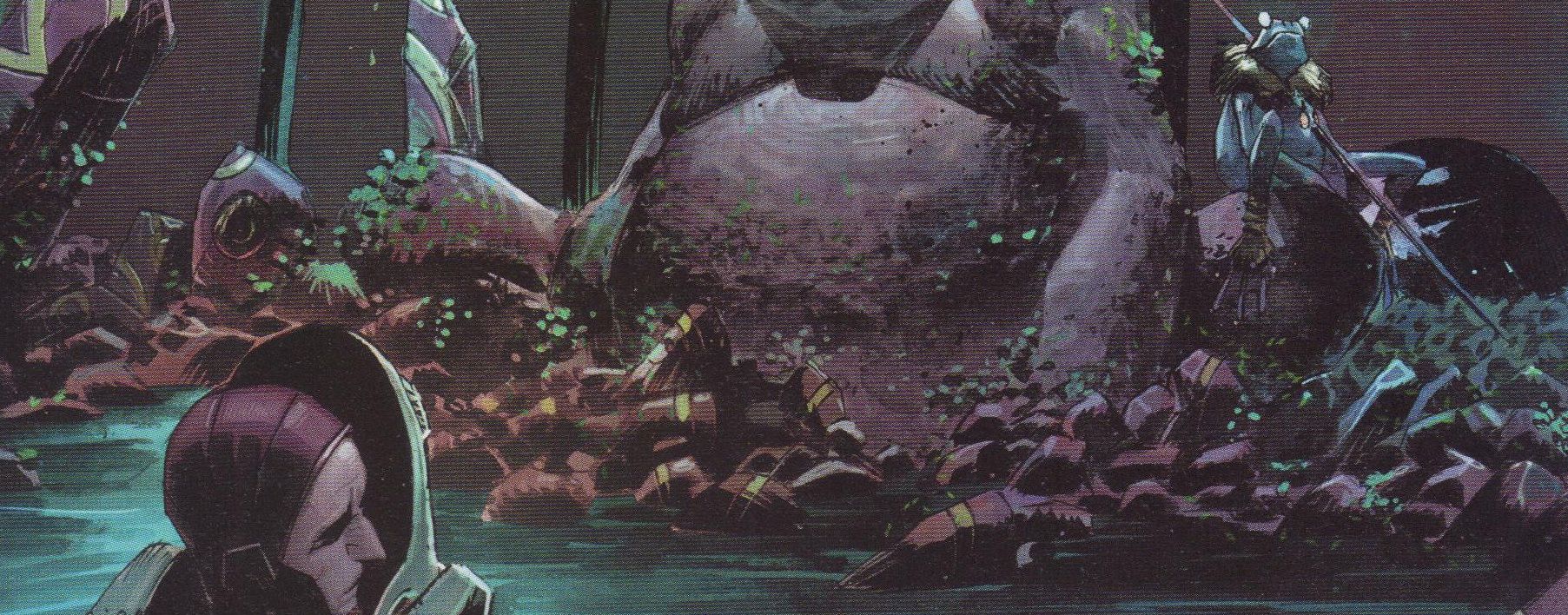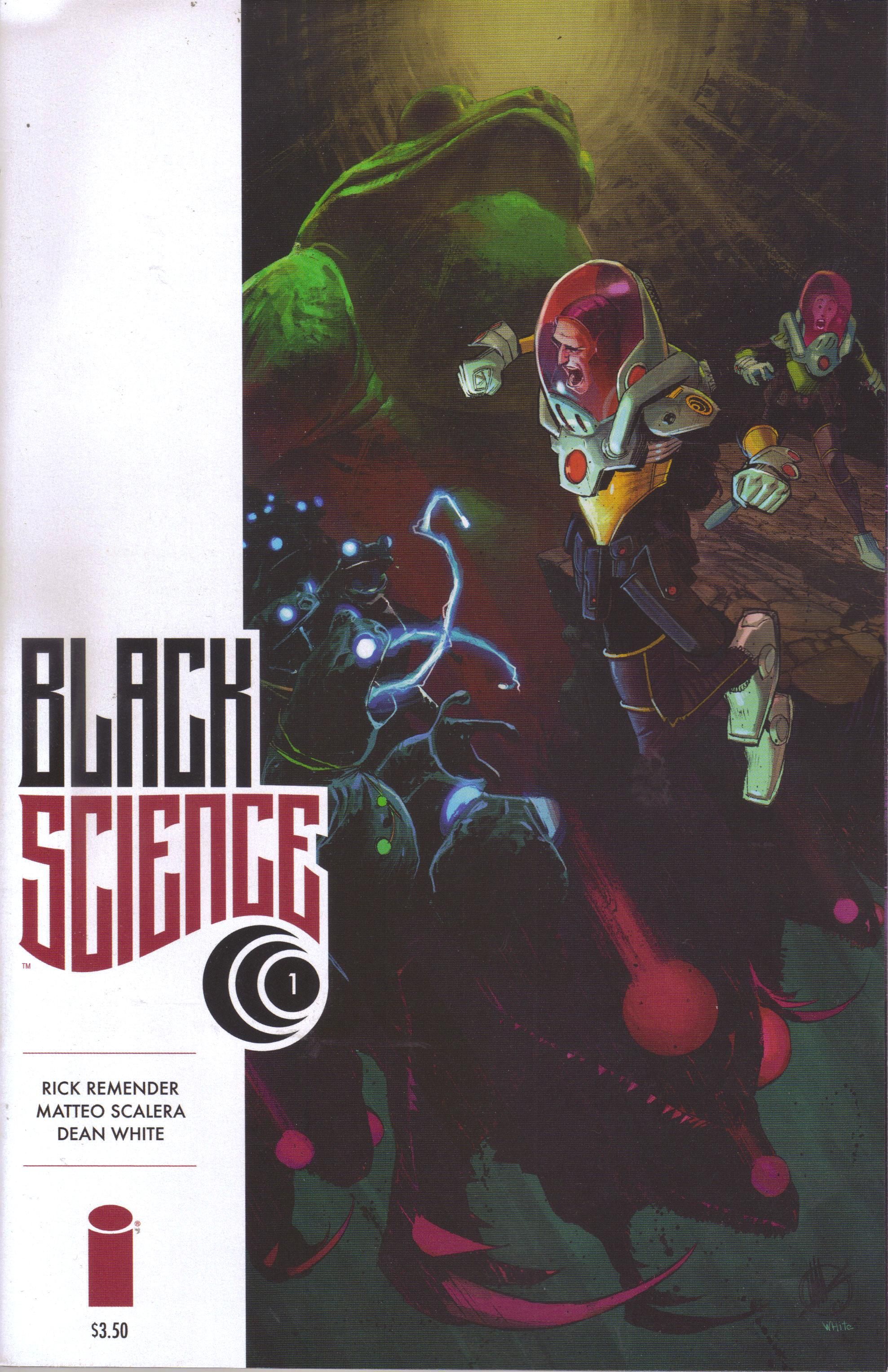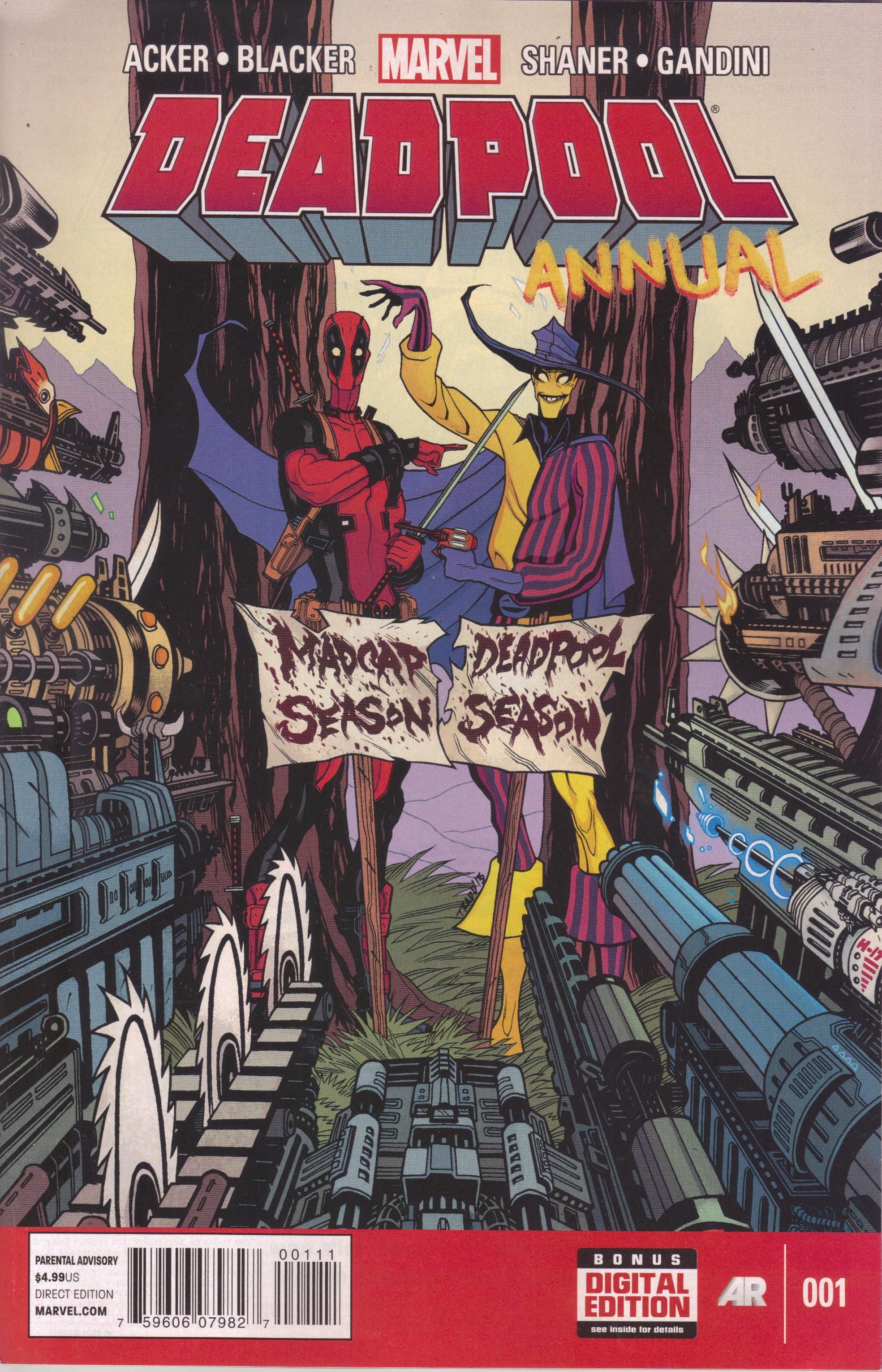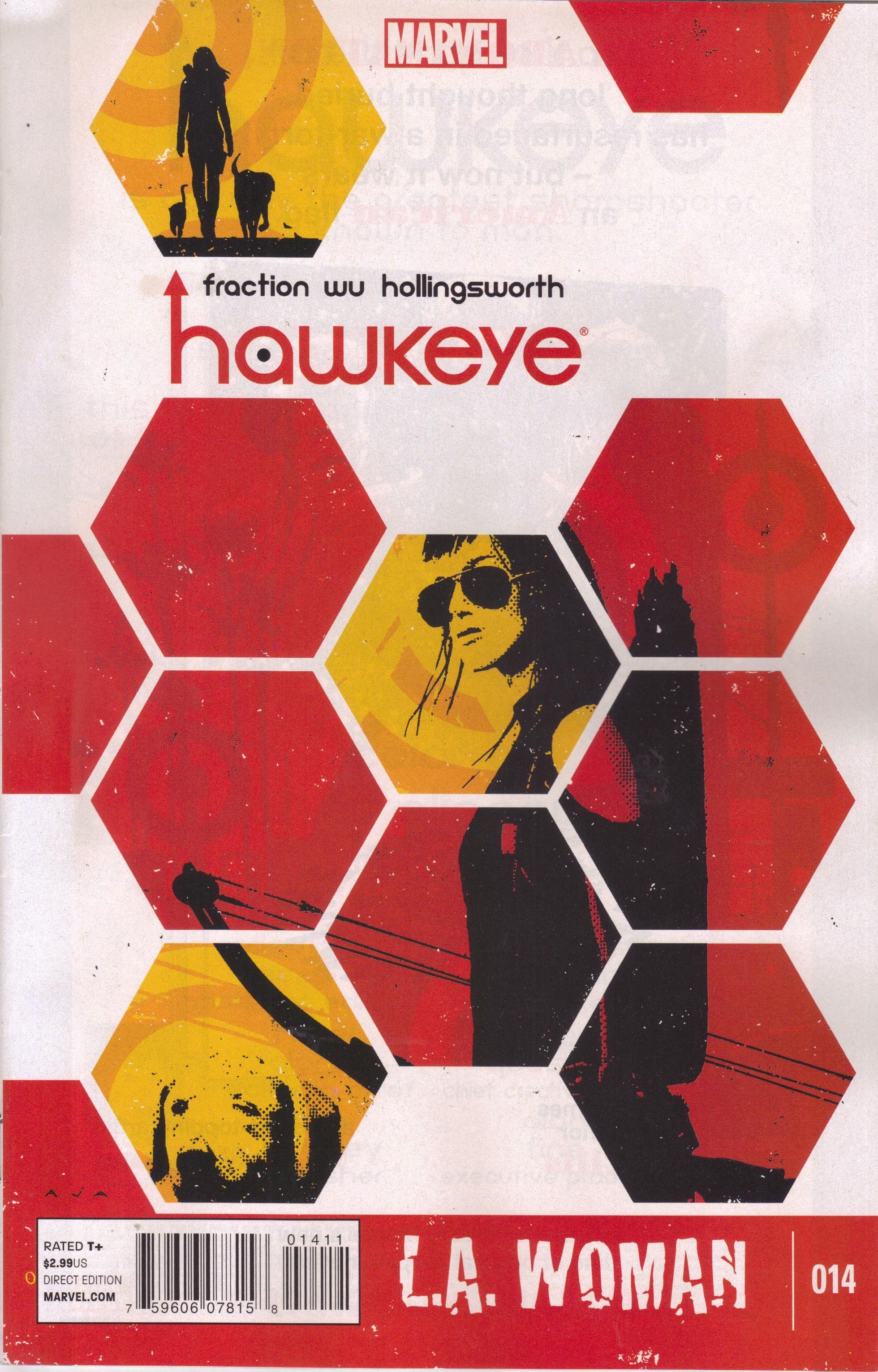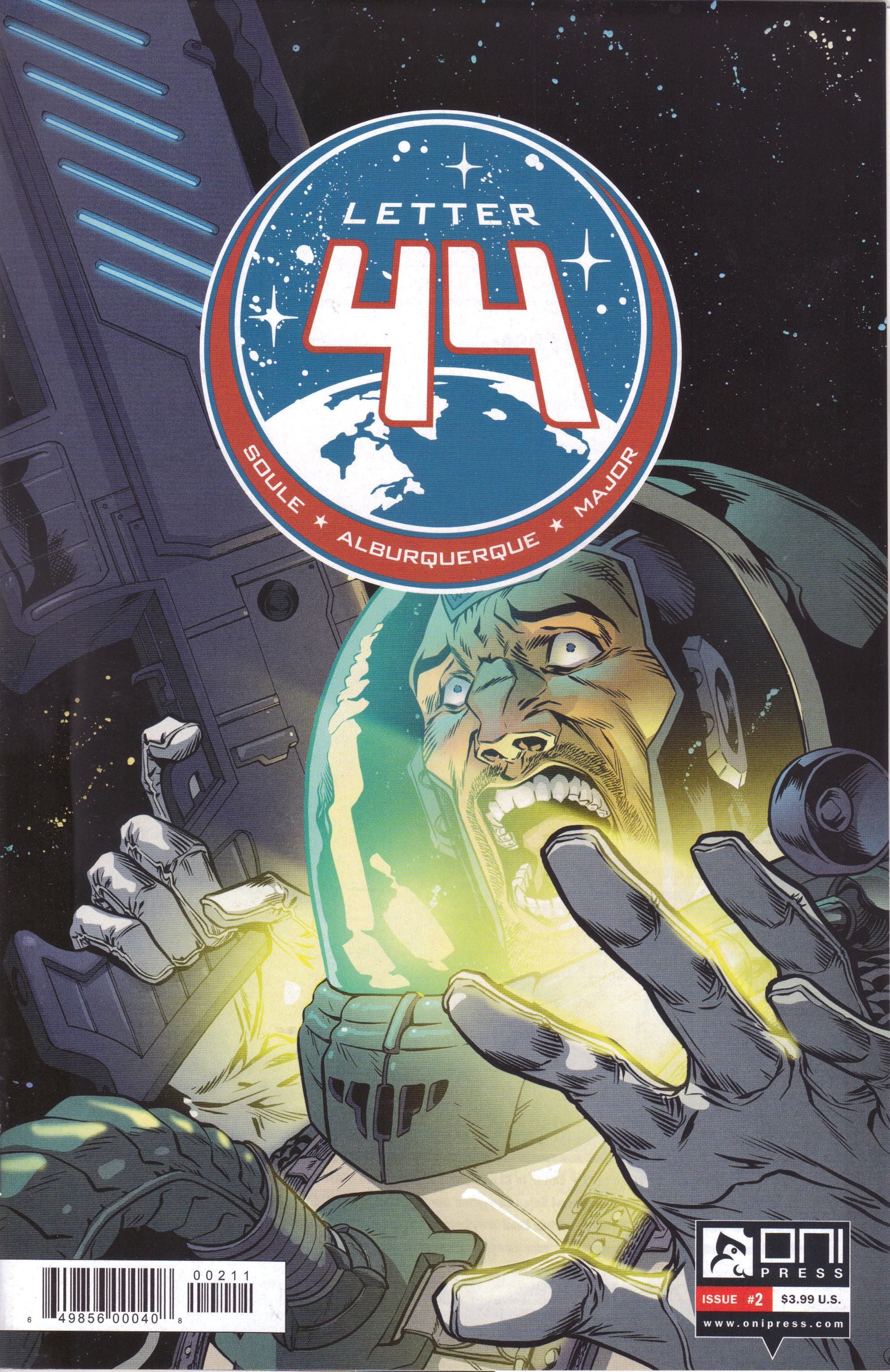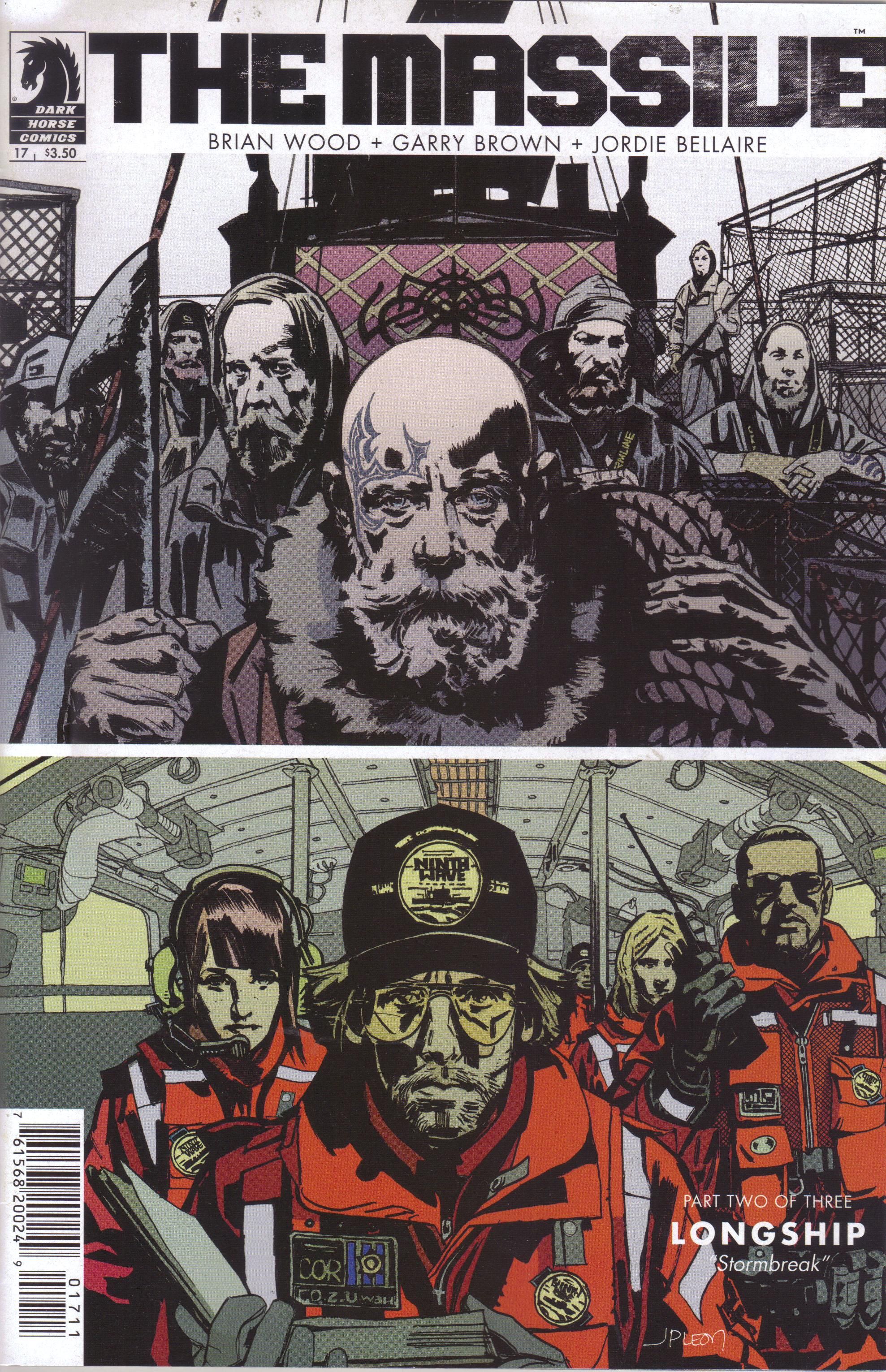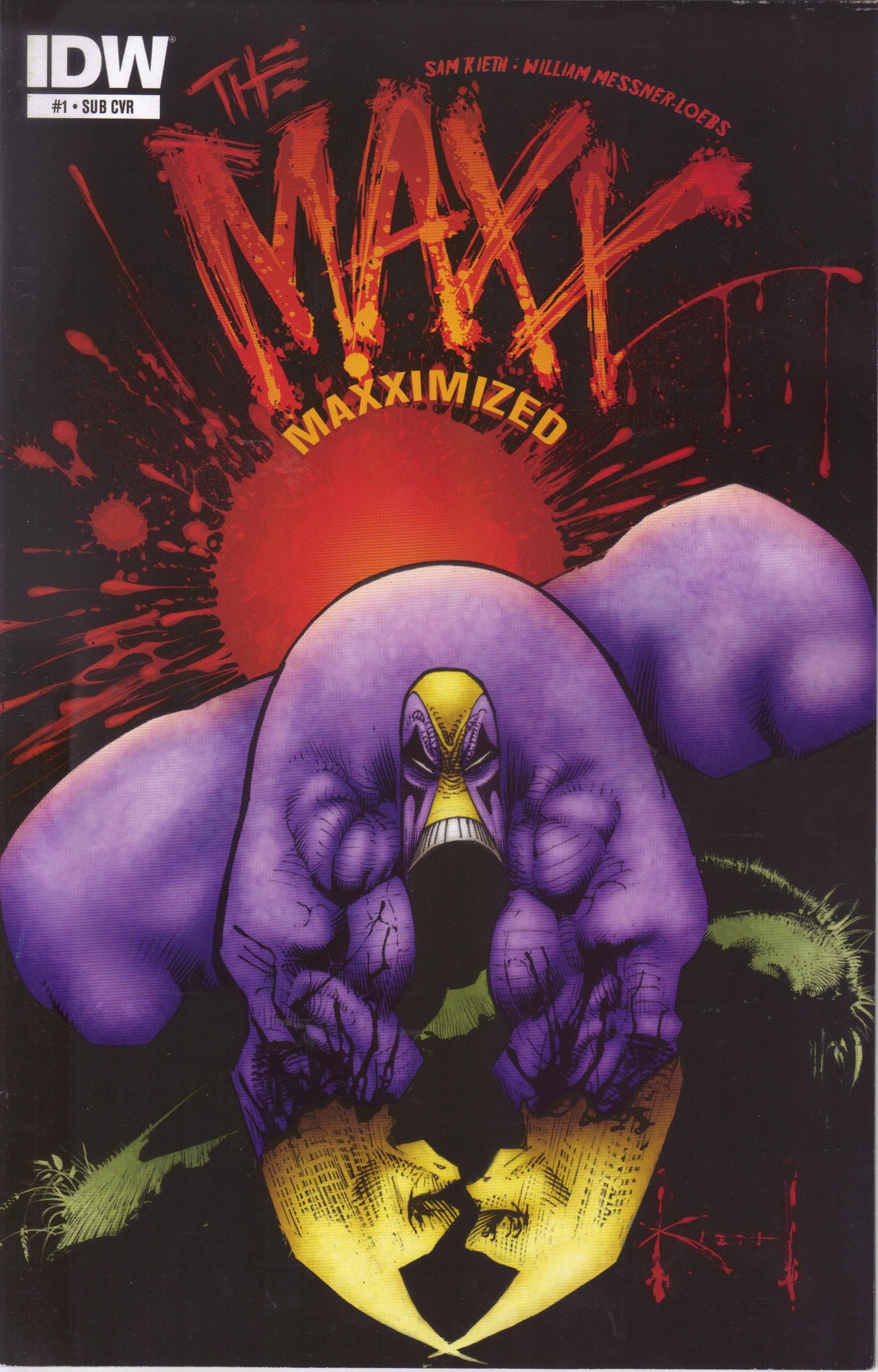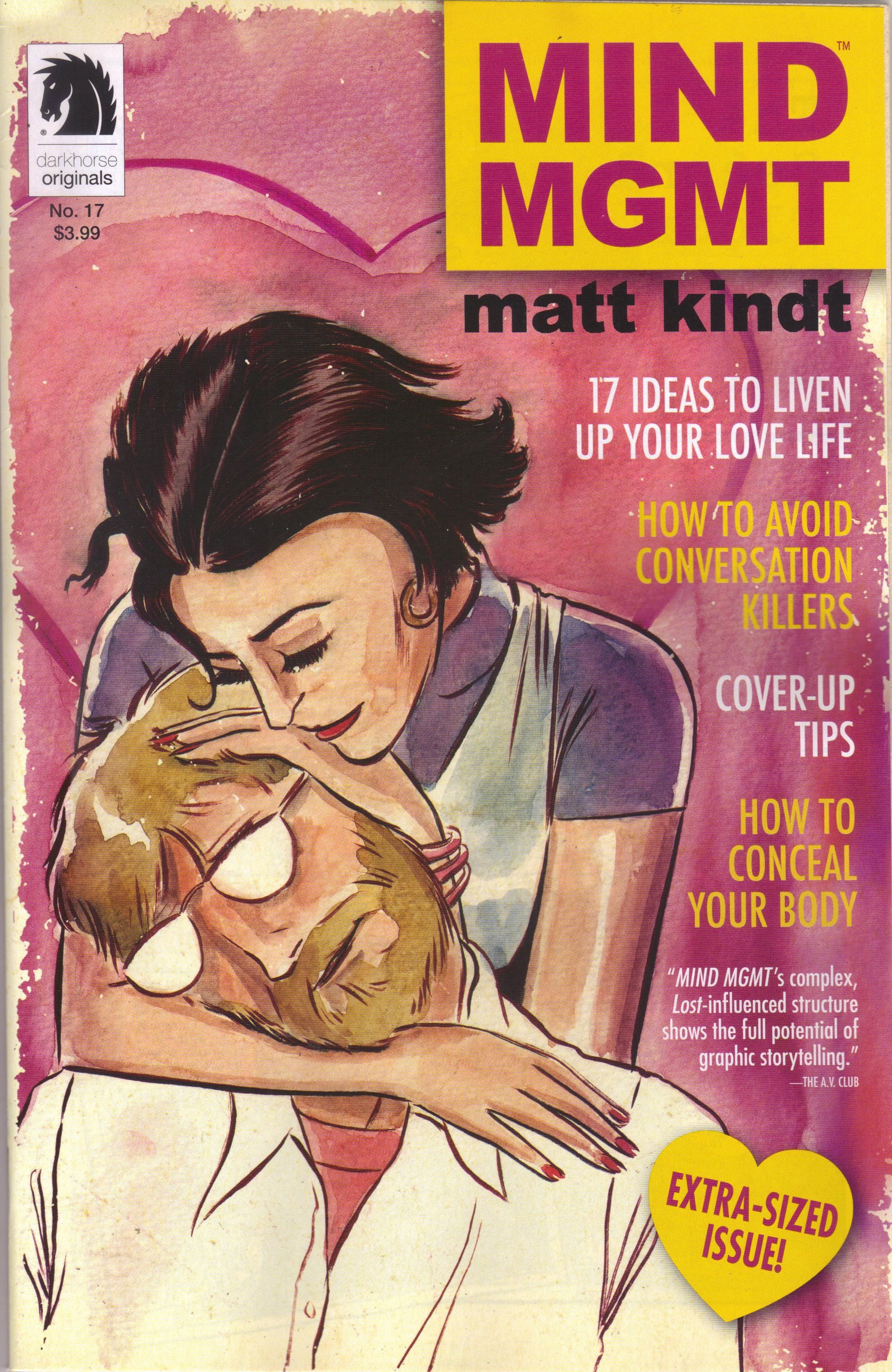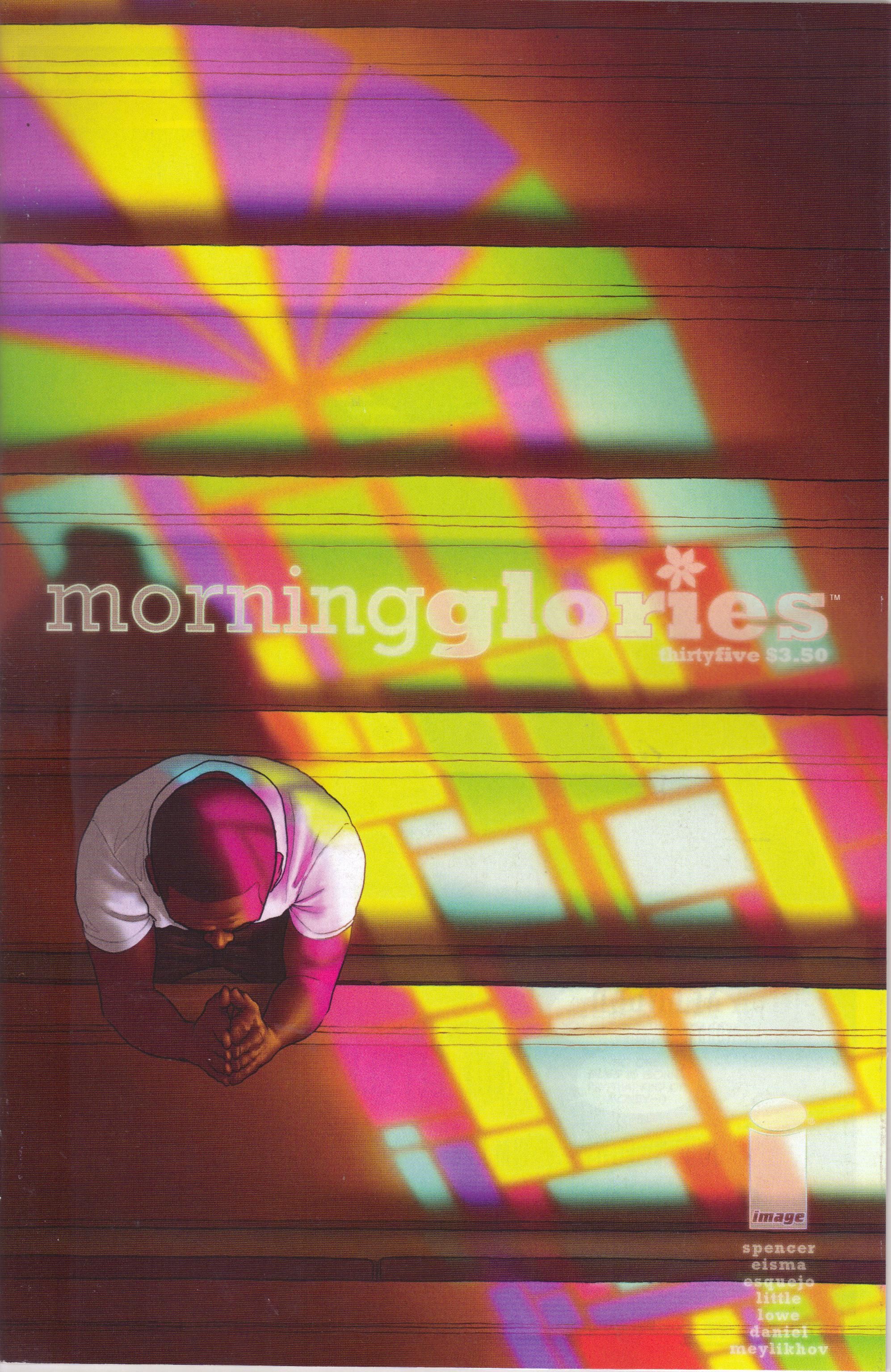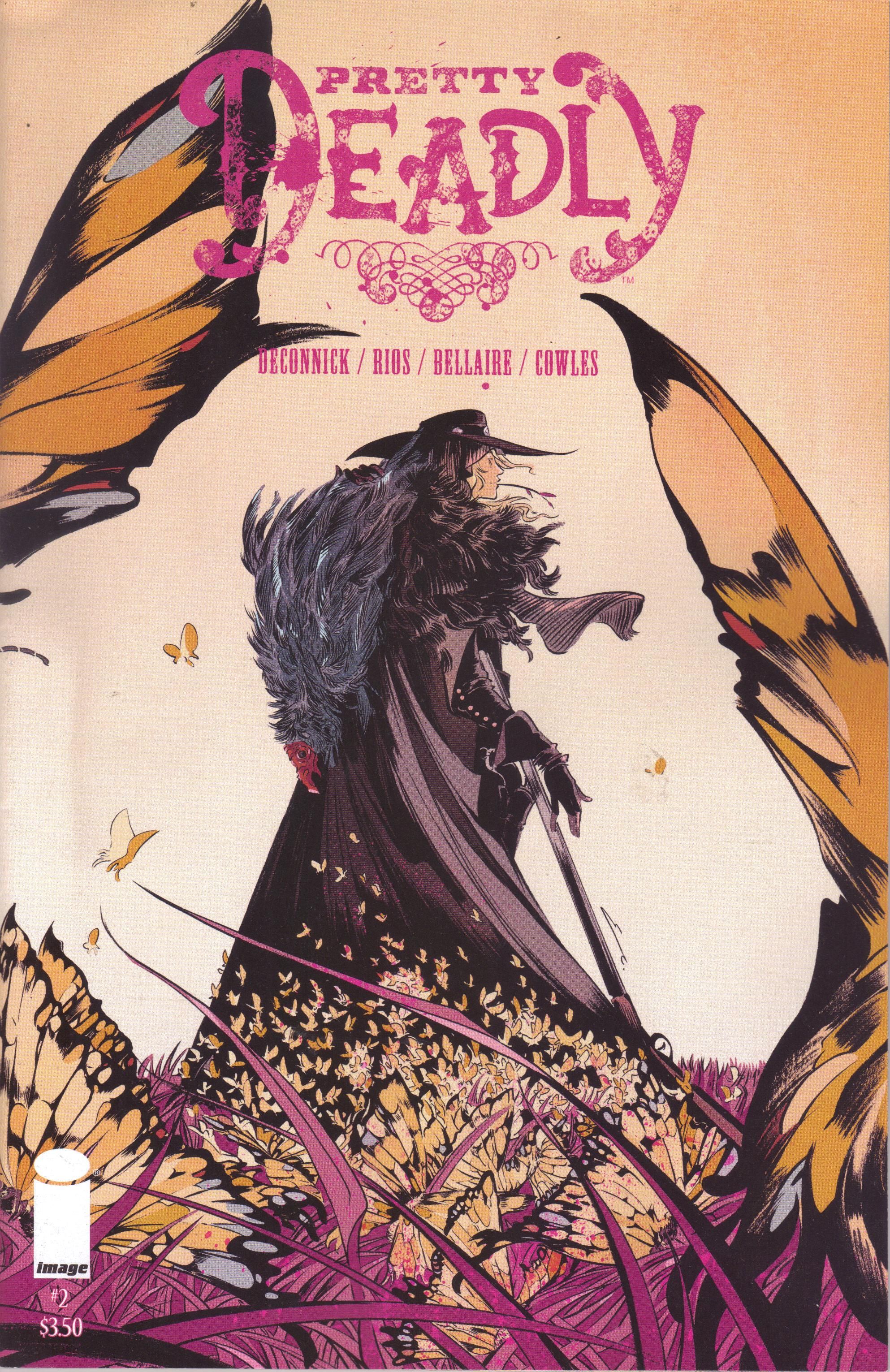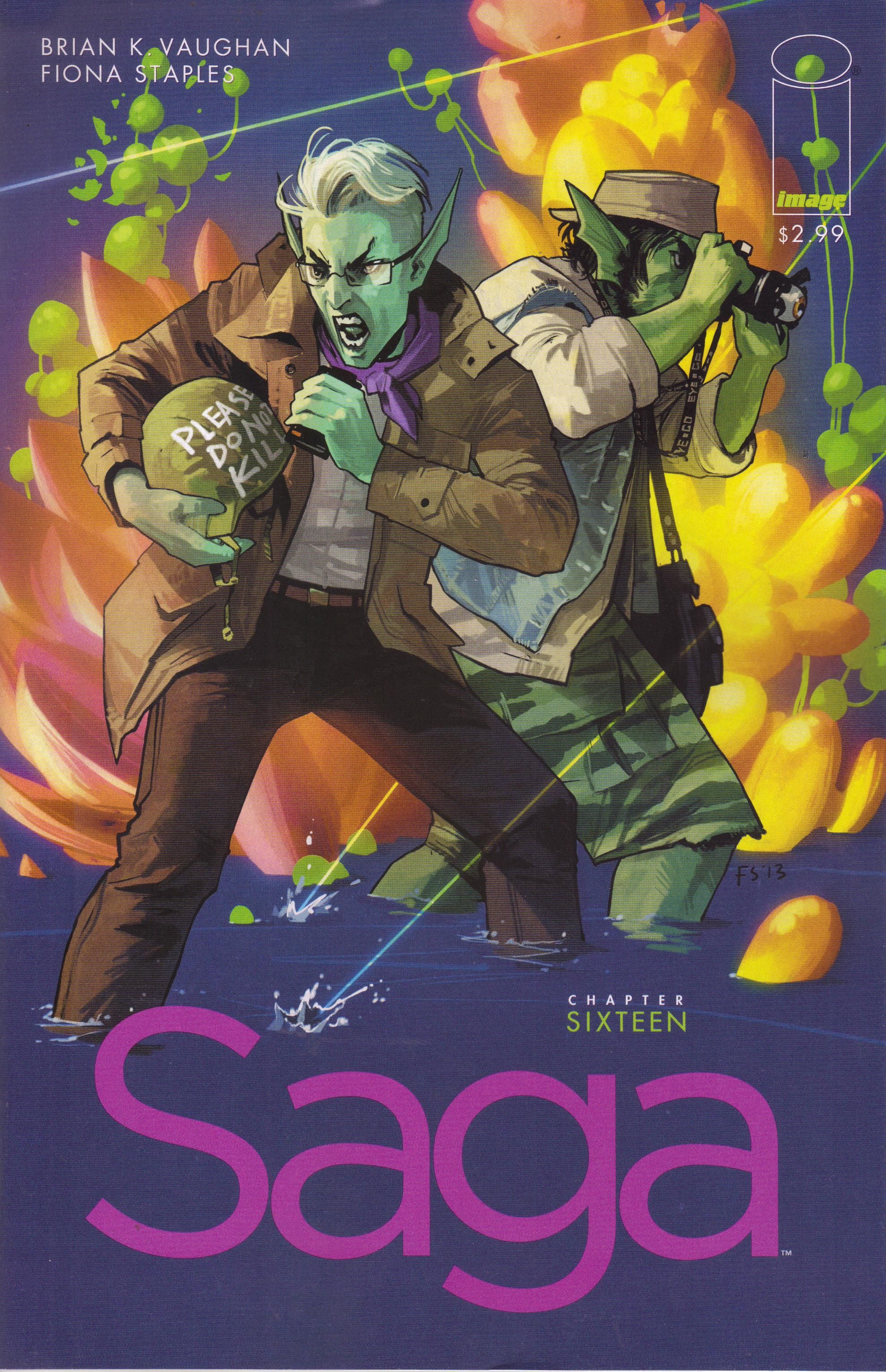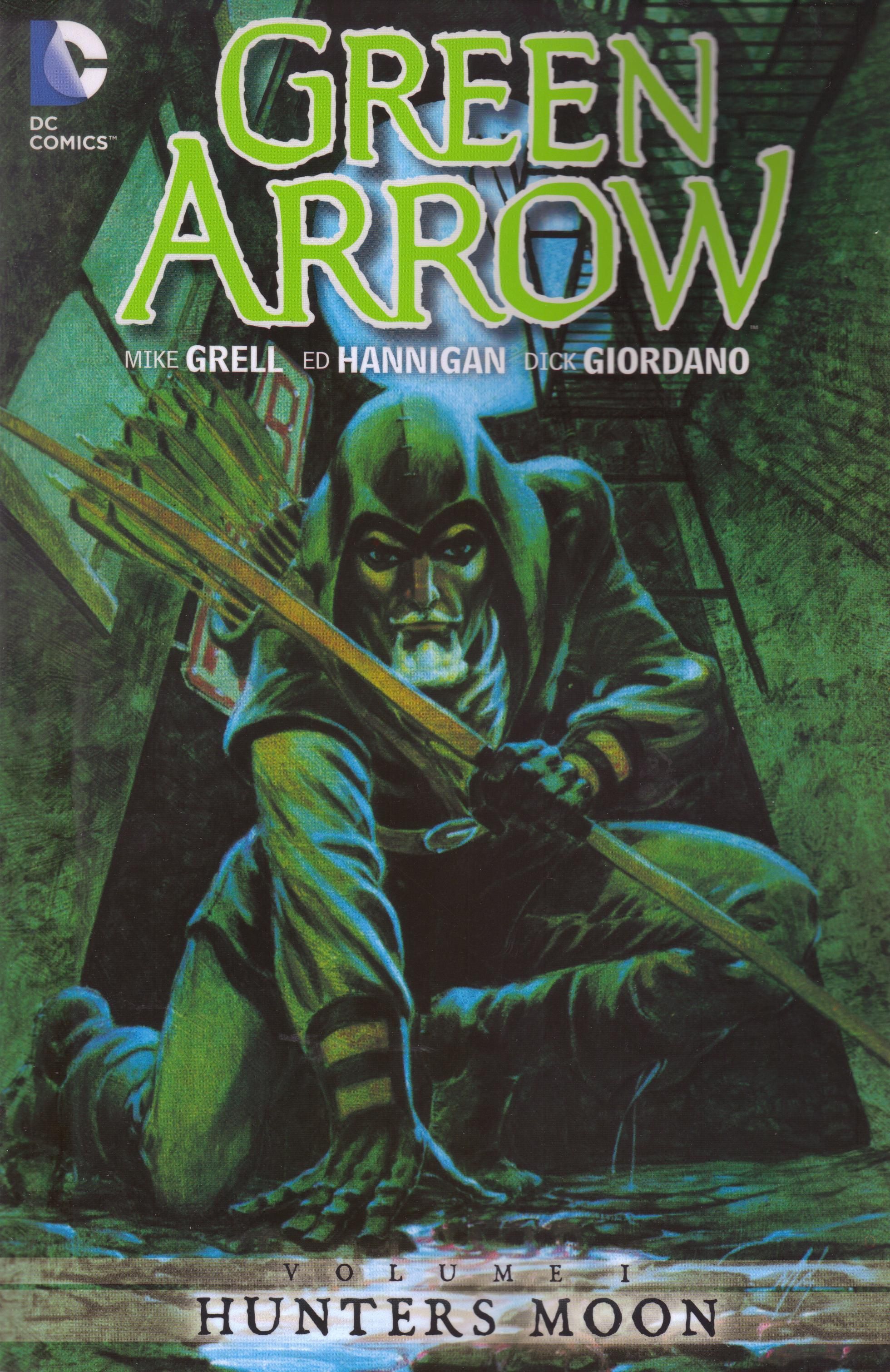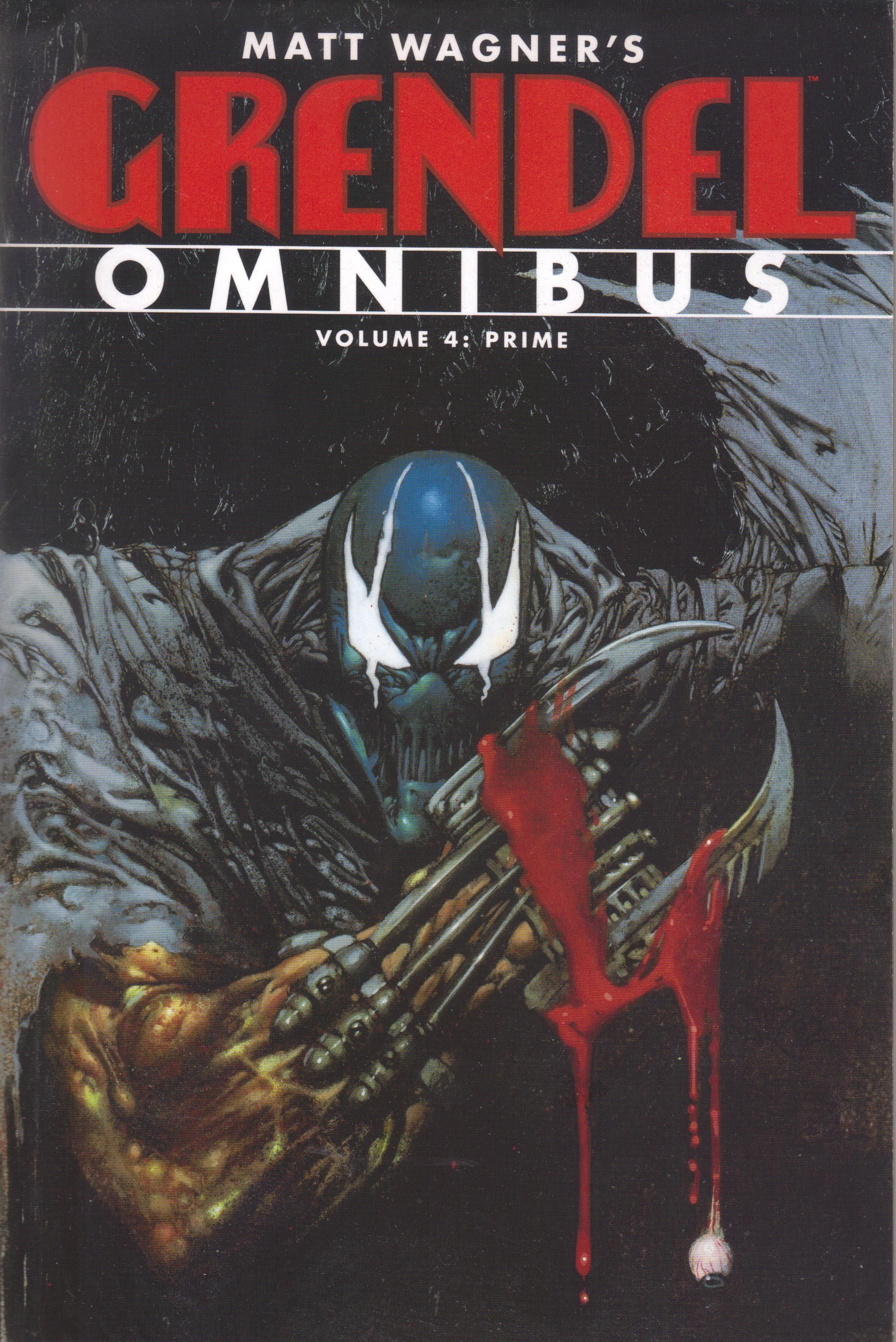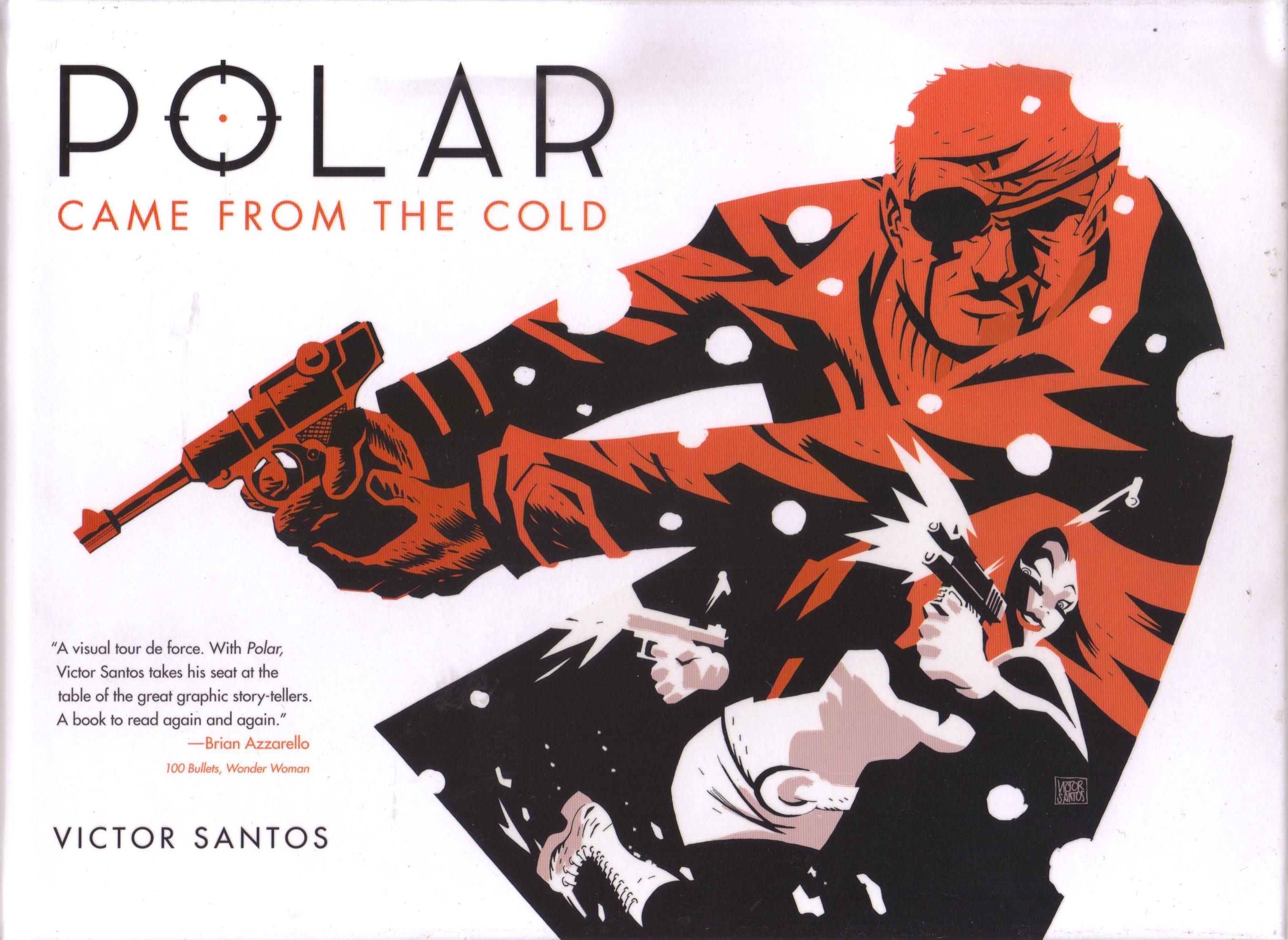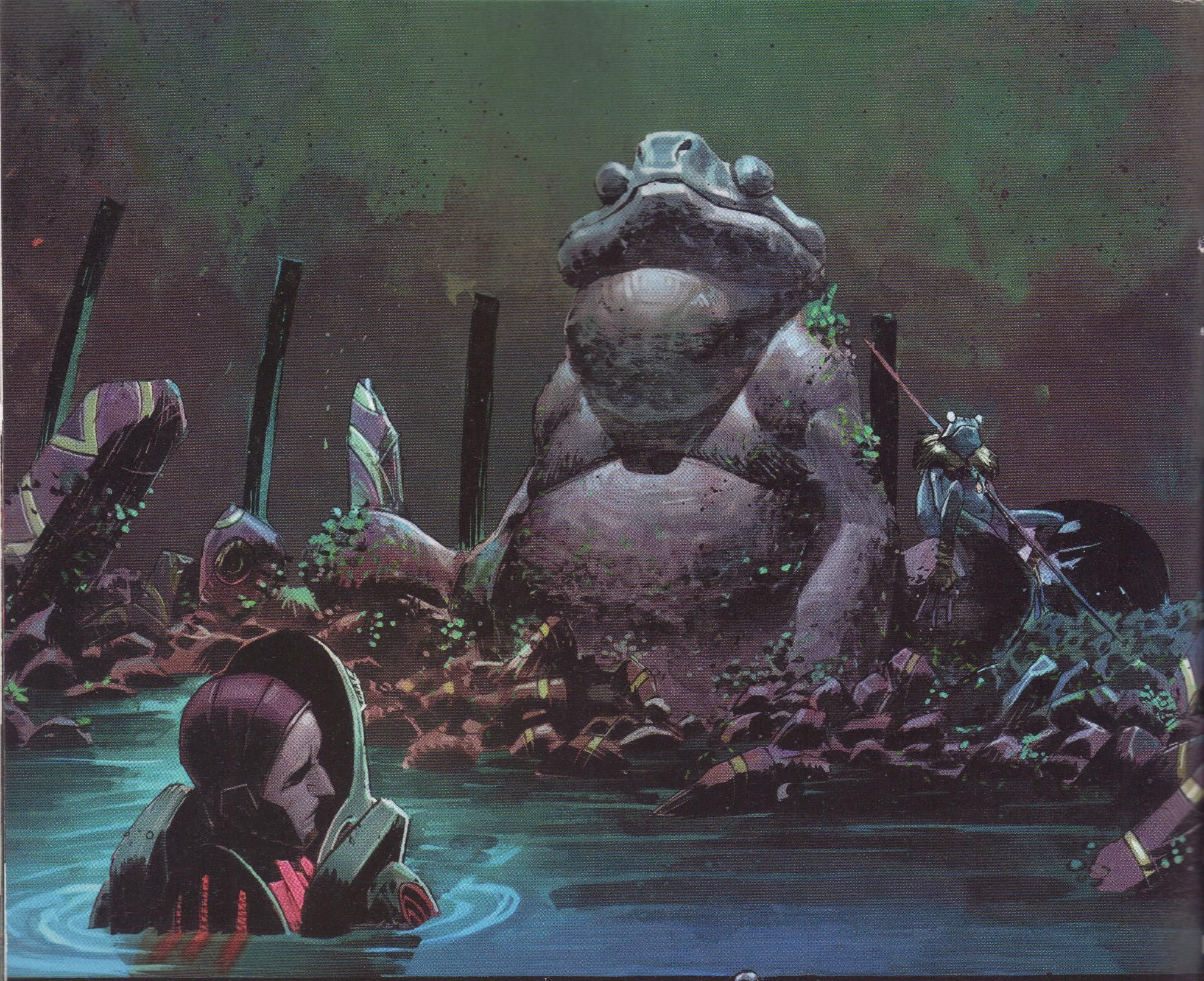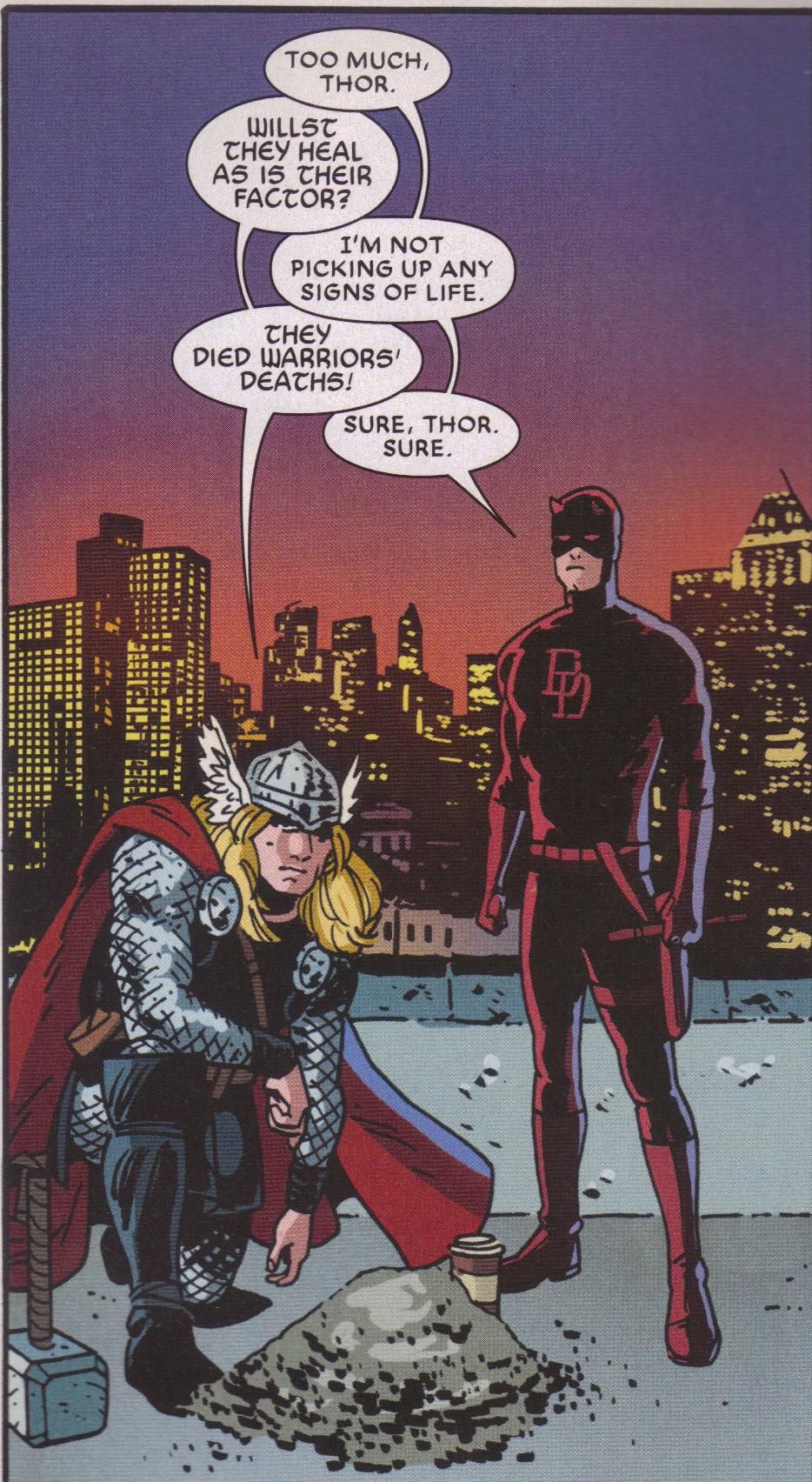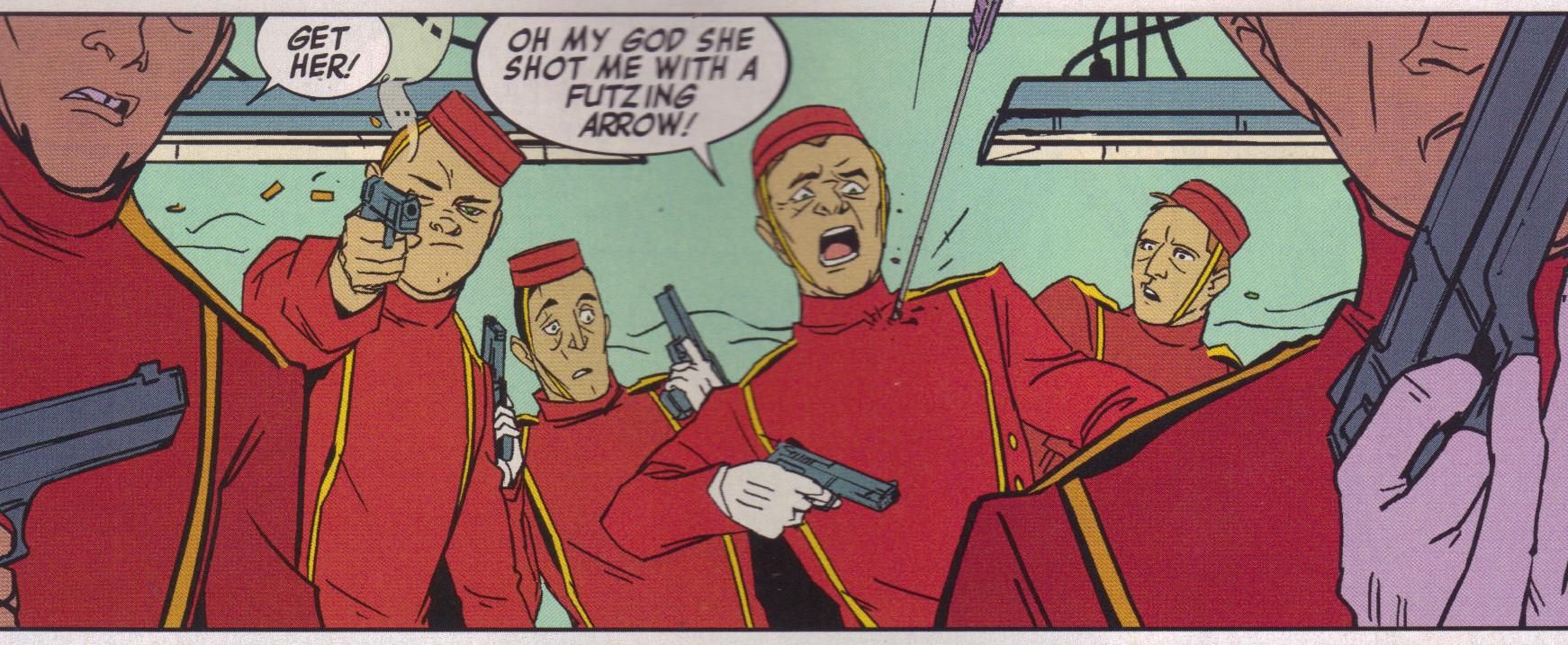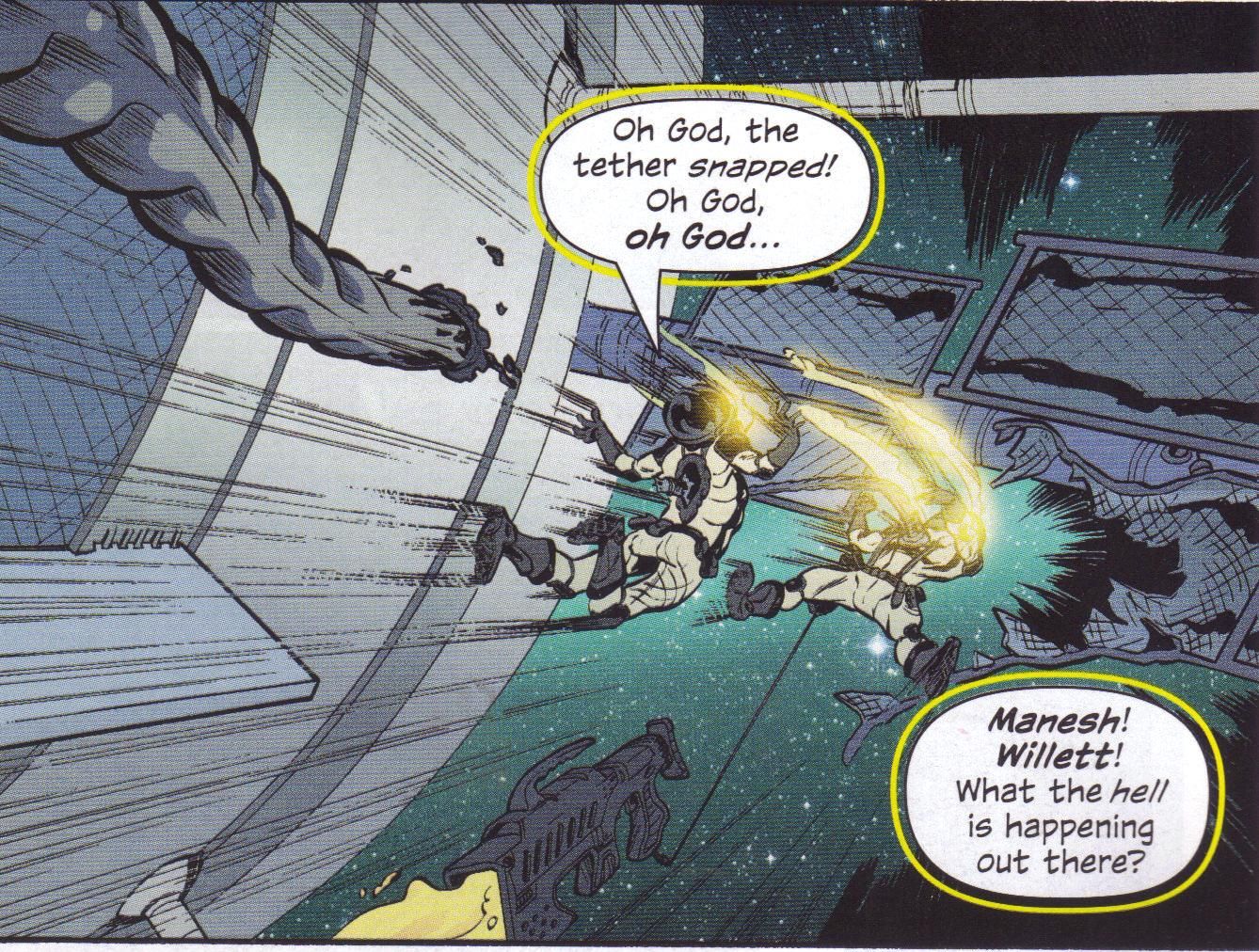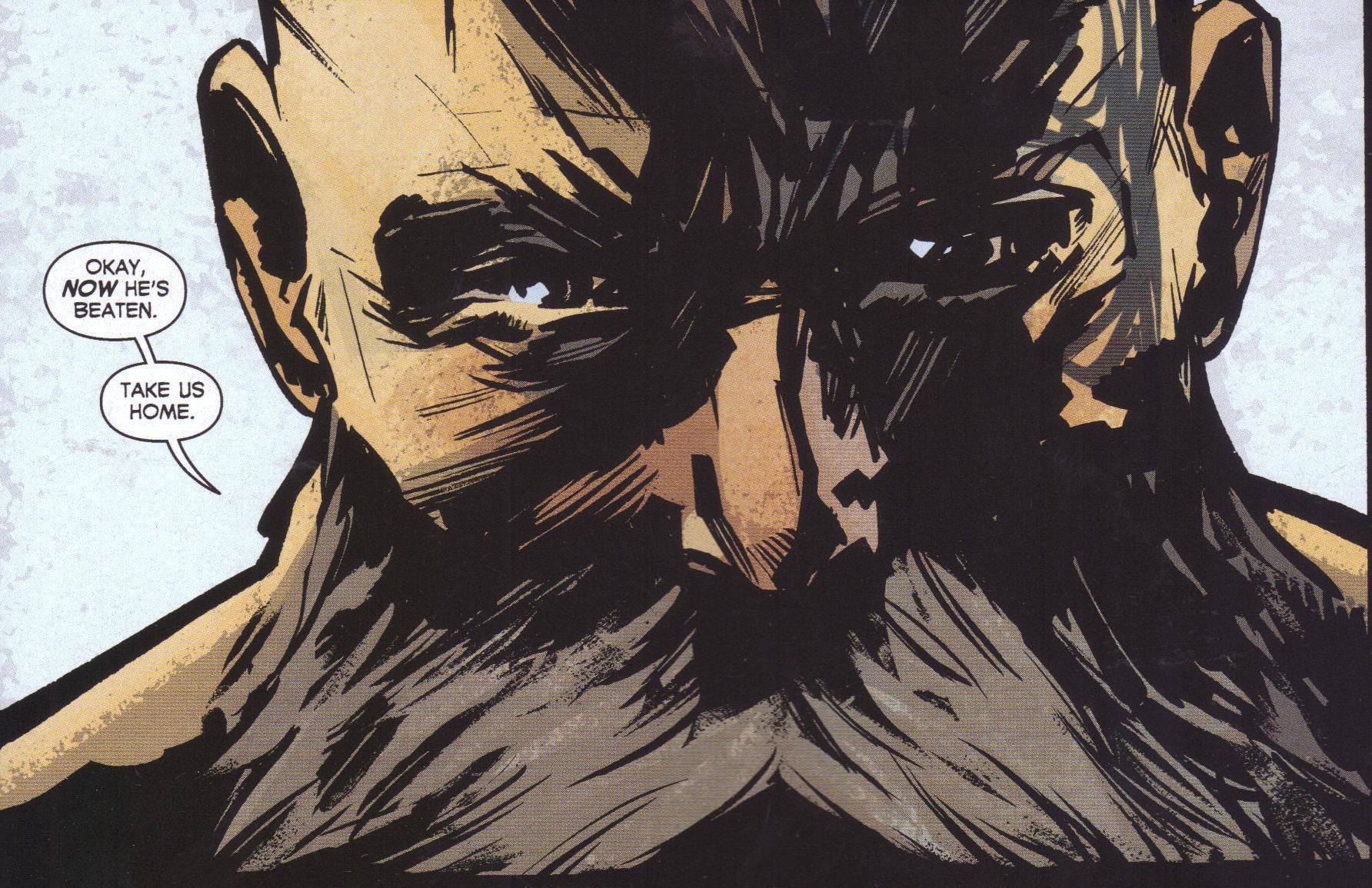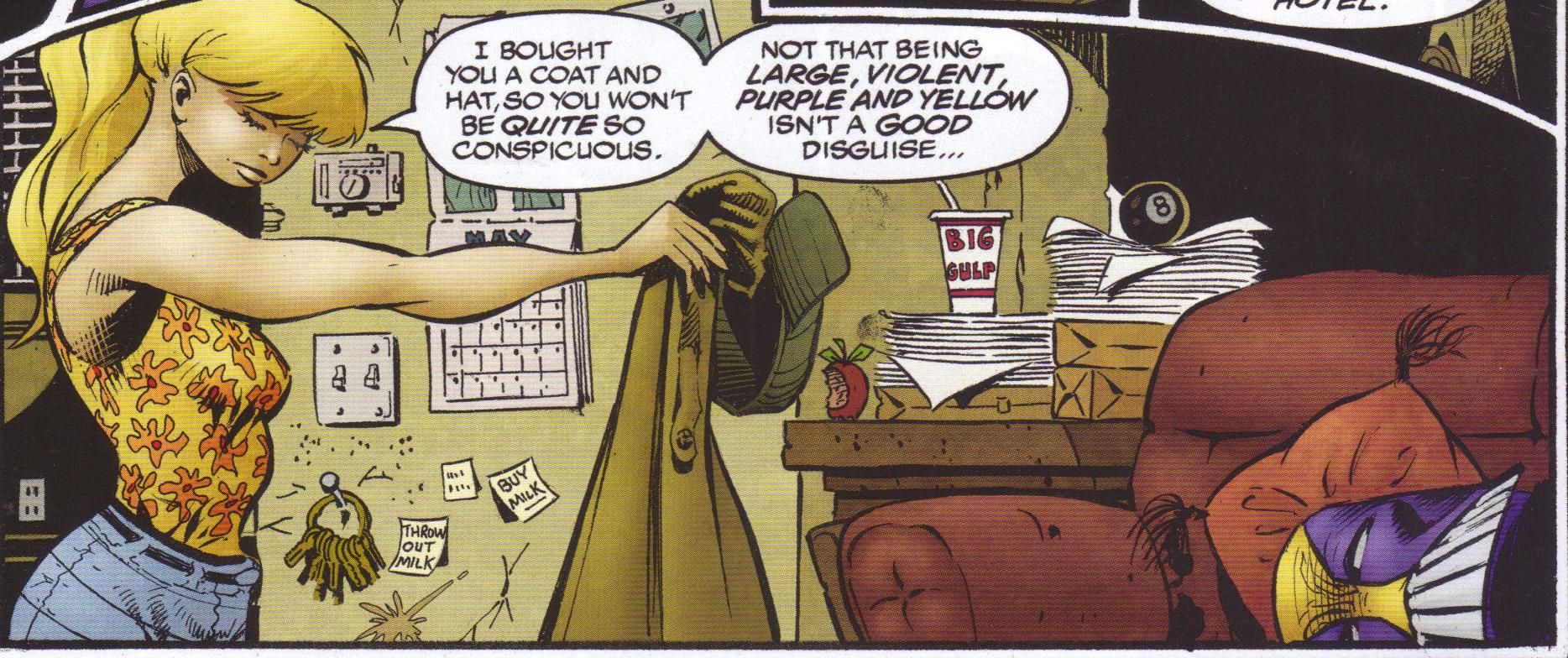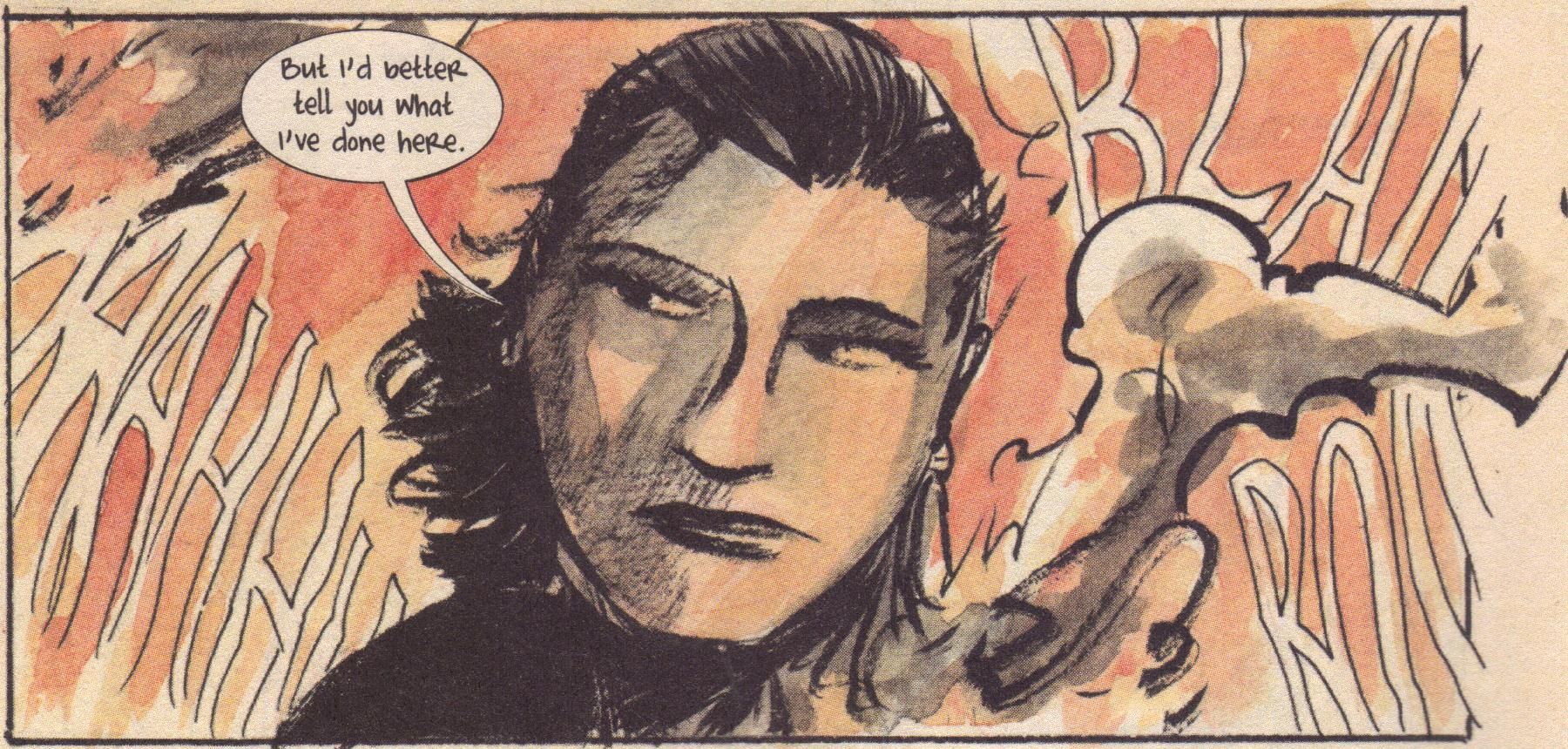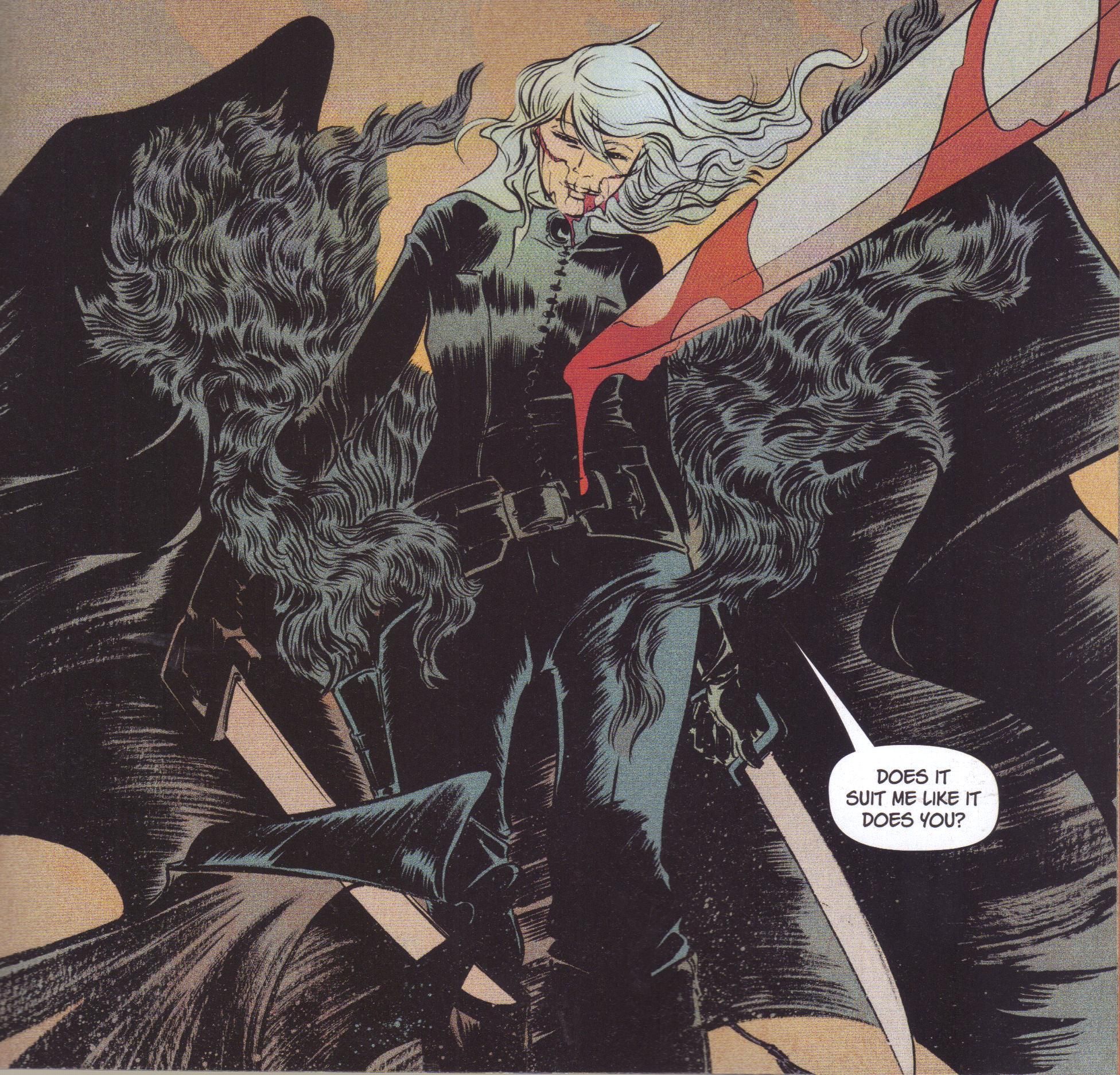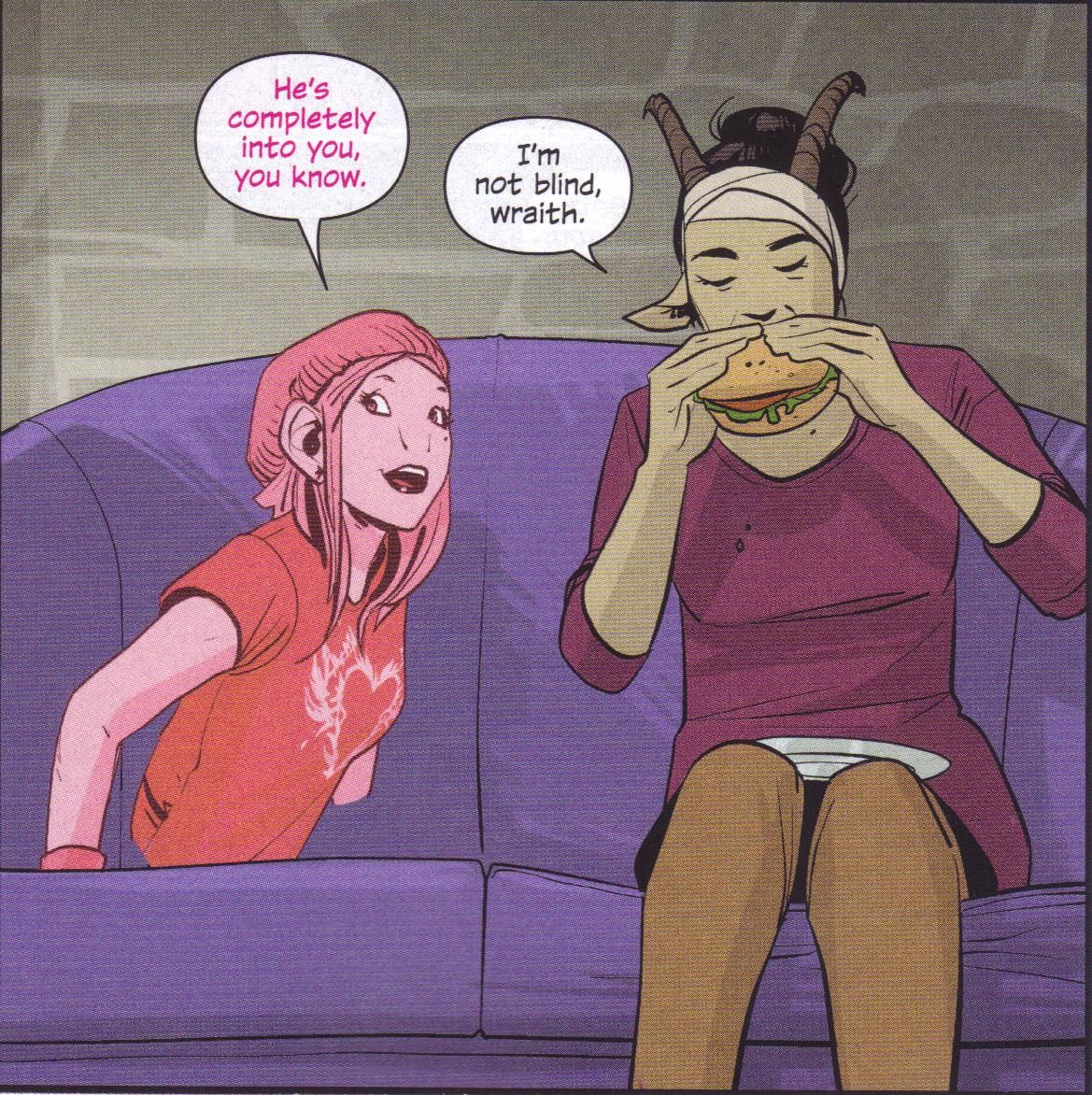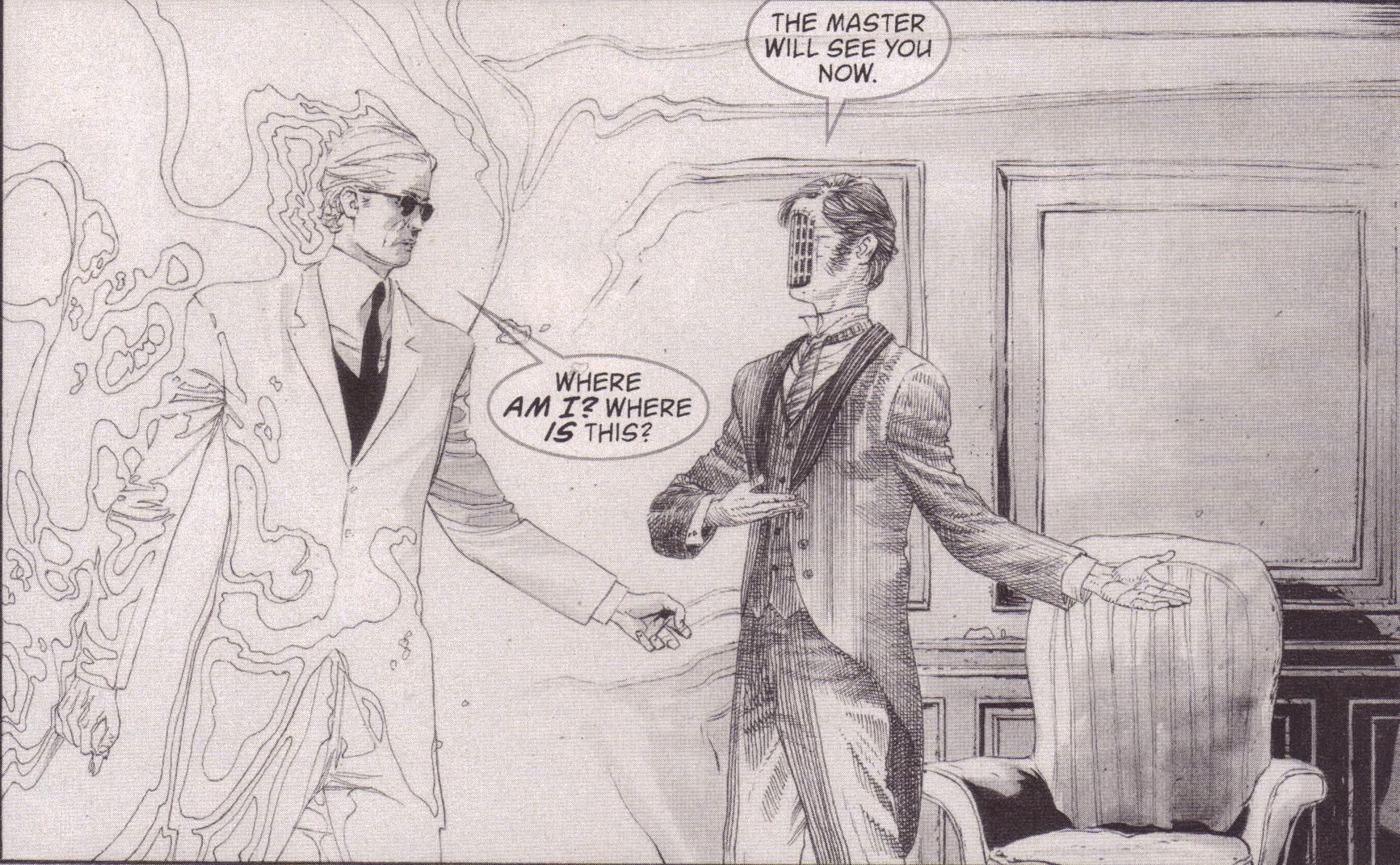Dare you say men are as gods? the shocked inquisitors in Rome would ask him. Can they change the stars in their courses? They can, Bruno answers; they can; they have already. (John Crowley from Ægypt)
Black Science #1 by Rick Remender (writer), Matteo Scalera (artist), Dean White (painter), Rus Wooton (letterer), and Sebastian Girner (editor). $3.50, 29 pgs, FC, Image.
You know what Rick Remender is good at? He kills at first issues, and he's pretty damned good at initial arcs, too. The first few issues of Fear Agent were brilliant, and he rode the first killer arc of Uncanny X-Force to critical acclaim even though the subsequent 30 issues were nowhere near as good as that first story (and the comic was downright bad by the end). It's the same with a lot of Remender's comics, and so I went into Black Science expecting it to be pretty good. And you know what? Remender's track record continues.
Remender throws us into a mess, as two scientists/astronauts/explorers are in some kind of pickle at the very beginning. They're on a weird, nightmare planet being chased by fish-creatures riding giant moray eels. You know, like you do. One doesn't make it out alive, and the other continues running, trying to return to the rest of his group with a key ingredient that will activate a machine to get them the hell out of Dodge. He comes across frog-creatures that are apparently fighting a war with the fish-creatures, and he finally manages to return to the group, but when they leave, they don't reach their home, but another strange dimension where lots of horrible stuff is happening. Damn, that has to suck.
As weird as the landscape might look, the issue itself is fairly simple: a man runs for his life while people try to kill him, and he's just trying to get home. It's vaguely similar to that first issue of Fear Agent, but that's okay. Remender doesn't do too much with characterization - Grant is kind of a tool, but we can forgive that because he's going through some trauma, and he's a bit worried about, you know, dying. Remender teases us about what "black science" actually is - if we haven't read the solicits, we can surmise it's something to do with discovering and exploring dimensions that maybe are best left alone, but the fact that it's not clear in this issue is perfectly okay, as Remender teases us nicely with it. The fact that this is an amalgam of several other science fiction stories and/or a dark version of Reed Richards isn't that big a deal, either, because Remender doesn't let us catch our breath to think about it too much - he just propels us forward, and it's very exciting. It's a very good way to kick off a series, because it draws us in very well and then makes us wait until next month for some answers. Maybe you don't care about the answers, but at least this first issue isn't boring!
Despite the evil influence of Dean White's coloring, the art is tremendous. White is a good colorist, but he does tend to "level" all the pencilers he works with, so that they all look similar, a relatively new phenomenon among colorists that I like to call the "Frank D'Armata Effect." When he works with stronger artists, the Effect is balanced a bit, and I think Scalera is a strong enough artist that White's colors complement rather than overwhelm the pencil art. Scalera's angular style is strong enough that White's heavily rendered, heavily digital style helps make the artwork seem more unreal rather than "hyper-real," which is what happens with other pencilers. When you're dealing with such an alien landscape, the unreality of it all makes the simple humans stand out even more. Plus, Scalera and Remender's alien world is amazing, with the giant tortoises with ziggurats on their shells probably the highlight. Scalera is very good at action, too, so as Grant moves through the landscape, the book flows very smoothly as he runs for his life. It's a gorgeous comic, and it's nice to see White paired with an artist whose work can stand up to his overwhelming work.
I will say, as self-appointed Grammar/Spelling Cop, I'm a bit annoyed by a misspelling in this comic. At one point, we come across the word "dilatants." Okay, so Remender wrote that word. Wooton lettered it from the script. There is an editor listed for this book. So three people who were involved in this book didn't know how to spell "dilettante." That's fine - I didn't know how to spell it either, although I know it's not spelled "dilatant." I never understand misspellings in published work, because if I'm using a word like "dilettante," where there's even the slightest question about how to spell it, I'm looking it up. Maybe Remender had absolutely no doubt that "dilatant" was the way to spell the word, but if he's writing his scripts on a computer (and he's not one of these too-cool people who crank stuff out on a typewriter because they're so cool), he'd get a squiggly red line under "dilatant" when he typed it. Now, I get squiggly red lines under a lot of words - in this review, I got one under "ziggurats," for instance. So maybe he ignored the squiggly red line. But I always pay attention to the squiggly red lines, and if I have any doubt about how to spell things (even "ziggurat," which I was 99.99% sure I spelled right), I look it up. It's not that hard. I know I'm going on about this, but it really annoys me when I see something spelled incorrectly in a published work that is obviously not a typographical error. This is a case of Remender sounding out a word and hoping for the best. That's really unprofessional. Plus, at least two other people saw this before it went to press, and they didn't know how to spell it either. And maybe Remender's significant other saw it. Maybe Wooton's significant other saw it. No one caught it before it went to press. That's sad.
Okay, rant over. Beside that error, Black Science is cool. And it has that groovy cover!
Rating: ★ ★ ★ ★ ★ ★ ★ ★ ☆ ☆
One totally Airwolf panel:
Deadpool Annual #1 ("Madcapped!") by Ben Acker (writer), Ben Blacker (writer), Veronica Gandini (colorist), Joe Sabino (letterer), Evan Shaner (artist), and Jordan D. White (editor). $4.99, 31 pgs, FC, Marvel. Deadpool created by Fabian Nicieza and Rob Liefeld. Madcap created by Mark Gruenwald and Paul Neary. Daredevil created by Stan Lee and Bill Everett. Thor created by Stan Lee, Larry Lieber, and Jack Kirby. Luke Cage created by Archie Goodwin, John Romita Sr., and George Tuska.
I wasn't sure if I was going to get this, because it's not by the regular writers, and I've never been so huge a fan of Deadpool that I want to read everything he appears in. But I checked this out because I liked the art, and Madcap is always fun to see. Unfortunately, it's pretty lousy.
Okay, "lousy" might be too strong a word. If we consider it from the viewpoint of just the story, it's mediocre. Deadpool is trying to kill Matt Murdock, but before he can, he and Madcap accidentally get merged into one body, and Deadpool spends some time with Madcap in his head. He figures out a rather gruesome way to solve that problem, though. I guess it's supposed to show what Deadpool did with a different voice in his head, as one of the current series' big plot points is that he has a voice in his head. I don't know what the "one of the most frequentliest asked questions" about his current series is, but the whole idea seems to be that Deadpool has experience with a voice that belongs to someone else rattling around in his head.
So it's not bad. Some of it's funny, although it's not as funny as the first part of the current series was (recently, of course, that's been much more deadly serious). The idea that Deadpool has trouble killing people because New York is so overrun by superheroes is funny, as is Clueless Thor (see below). I kind of wish Acker and Blacker had acknowledged Posehn and Duggan's retcon of Deadpool into Luke Cage's history, because Cage fights Deadpool and Deadpool doesn't mention their 1970s adventure. It's possible that this issue was written so long ago that it was before that issue, but that's still kind of annoying. Shaner's art is good - it has a Chris Samnee vibe to it, and he does a really nice job with Madcap and Deadpool's inner world. So there's that.
Why is it lousy, then, instead of just mediocre? Well, it's kind of pointless, and while pointlessness isn't necessarily a bad thing, it's not hilarious enough to be just about the pointlessness. Some of the jokes feel really forced, like the Dancing With the Stars bit. More than that, though, is the crassness with which Marvel published this. I know it's pointless to rant about the value of a comic, but remember when annuals were actually events? Recently, Marvel has simply been publishing comics they call annuals but are just slightly - very slightly - longer "regular" issues. The Hawkeye Annual in which Kate Bishop went to California is a recent example, but that had the benefit of being pretty good. While this isn't terrible, it's basically a regular issue of Deadpool - there's nothing "special" about it. It doesn't feature a major turning point in the life of the character nor does it feature a creative team that you'd never think of showing up on a Deadpool comic, like Alan Moore and Adam Hughes. The price of Big Two comics continues to be a sticking point - this is five (5!!!!) dollars for 31 pages of story. That is, not to put too fine a point on it, bullshit. I know the economies are different, but a lot of comics from places like Image have 30 pages for 3-4 dollars, and those dudes are making it work. I still don't understand why Marvel and DC, which are (presumably) swimming in cash, can't occasionally do something for the consumers. If Marvel wants to charge 4 dollars for their 20-page Avengers comics and people will buy them, that's fine. But if they're going to charge 5 or 6 dollars for an "annual," couldn't they splurge a little and make it feel like one? It's the same thing with their first issues - incredibly, Marvel has charged 4 dollars for a #1 in the past and then dropped the price to 3 dollars, which makes no fucking sense whatsoever. At least Vertigo had those dollar first issues for a while, which got me to buy a few that I probably would have skipped. Why would Marvel do an "annual" and not try to do one of those big 64-page ones that they used to do? If they published one of those and even charged 6 bucks for it, it might actually feel like an event. This feels like a regular issue of Deadpool. They could have easily cut some pages, charged $2.99, and called it Deadpool #20. Sigh.
Anyway, this is a not a terrible comic. It's not worth the money, though.
Rating: ★ ★ ★ ★ ½ ☆ ☆ ☆ ☆ ☆
One totally Airwolf panel:
Hawkguy #14 ("L. A. Woman") by Chris Eliopoulos (letterer), Matt Fraction (writer), Matt Hollingsworth (colorist), Annie Wu (artist), Devin Lewis (assistant editor), and Stephen Wacker (editor). $2.99, 20 pgs, FC, Marvel. Kate Bishop created by Allan Heinberg and Jim Cheung. Madame Masque created by Stan Lee and Gene Colan.
Okay, this week's theme is "Greg takes on the Critical Darlings!" I don't want to dislike the Critical Darlings, nor do I dislike them just to be "that guy who doesn't like the Critical Darlings." This week, however, three Critical Darlings came out, and I didn't really like any of them, to varying degrees, although one is less that I didn't like it than I don't love it yet. First up: HAWKGUY!
I've been going back and forth with Hawkguy, because some issues are painfully brilliant (issues #6 and 11, for instance), while some are just ... okay. I don't think any have been really bad, though, although for some reason, this issue just rubs me the wrong way. Maybe I'm still suffering from some Fraction-anger after Sex Criminals last week, but this issue just seemed to go way too far into the "Hey, look at me!" category. Let's break it down!
First, Wu's art is terrific. She nails Kate's facial expressions perfectly, from the "I'm pretty much an Avenger" confident hair-toss panel to the awkward "I got you an orchid" intrusion on a romantic moment. This issue really relies on expressions and body language from all the characters, an Wu is tremendous at those. It's a fairly dense book, too, so Wu has to fit a lot into it, but the artwork never feels cramped. I don't love Hollingsworth's colors (they're a bit too lazy), but the coloring doesn't ruin the book, so there's that.
But that's just the art. The writing is where this book falls apart. I've liked Kate Bishop since her first appearance back in the day, and I think Fraction has written her quite well throughout this run, but in this issue, I really dislike her. She's obnoxious, unfunny (for the most part), and trying too hard to be clever. When Fraction's writing isn't very good, these are the features of it, so it's not surprising that it's here, but it is a bit depressing because for the most part, Hawkguy has avoided this. I don't mind that the plot - Kate tries to get orchids for a wedding - is kind of lame, because the plot doesn't matter, but I don't like how Fraction sets it up. There are no other flower shops in Los Angeles? The bad guy is so stupid he runs Kate over (she's fine) even though there's absolutely no proof he's done anything wrong? Fraction almost rescues the idiotic whining about not having orchids at the very end, but it's still dumb to whine about orchids, especially when - as I noted - there are probably other flower shops in Los Angeles (yes, I know flower arrangements take a while, but come on, Marcus - focus on what really matters here!). Fraction also tries to address the cliché of the police dude who appears to be a jerk but eventually comes around, but as I've mentioned before, just because the writer engages in some lampshade hanging doesn't necessarily make the scene clever. Finally, what's up with the trenchcoat dude? I mean, that was just stupid.
I've been impressed enough with Hawkguy that this one issue isn't going to turn me off the book, but with this and last week's comic, Fraction hasn't been on a hot streak recently. We'll see what happens going forward.
Rating: ★ ★ ★ ★ ★ ☆ ☆ ☆ ☆ ☆
One totally Airwolf panel:
Letter 44 #2 by Alberto Jiménez Alburquerque (artist), Shawn DePasquale (letterer), Guy Major (colorist), Charles Soule (writer), and Jill Beaton (editor). $3.99, 22 pgs, FC, Oni Press.
The second issue of Letter 44 is as good as the first one, which is nice. Soule still has a lot of dialogue crammed into this book, but he still keeps it intriguing, as the president is still trying to decide what to do about the aliens in the asteroids while others in the government are trying to make sure he continues the agenda of his predecessor. That part of the book is interesting because President Blades really doesn't want to model his presidency on "President Bush," but he might be forced to. Soule is commenting without commenting on several of President Obama's policies that continued what Bush did even though he promised to end them. Without being too obvious about it, Soule is pointing out that being on campaign is different than being in office, and for me, at least, it will be interesting to see how he plays this out. (That's not to say I haven't been disappointed by Obama continuing to keep Guantanamo open or other things he claimed he'd stop, because I am, but I also recognize that it's easy for candidates to say a lot of things and difficult to do those things once they're actually in office).
Meanwhile, we get a bit more with the astronauts, which is where the action is, of course. Soule does a bit more with the military/civilian divide on the spaceship, which is subtle but sets up some interesting possible conflicts in the future. There's not a lot of action, but what does happen is pretty cool, even though I'm not sure why the one dude wants to keep it secret but then tells someone about it. Did I miss something? I like how Soule is laying the groundwork with Gabriel, although if it goes in the way I fear it will, it might not be a good idea (sorry, I don't want to be too much more specific). Soule has done a good job with both aspects of the story in these two issues, as he's juggling a big cast but doing it fairly well.
Alburquerque's art is still solid. The brief action scene is done well, and his wiry style helps make the twisted, odd movements of people in space more creepy. He hasn't had a ton to do yet, as there have been a lot of talking heads so far, but he does what he can!
This is a neat comic so far. Give it a try!
Rating: ★ ★ ★ ★ ★ ★ ★ ☆ ☆ ☆
One totally Airwolf panel:
The Massive #17 ("Longship Part Two of Three: Stormbreak") by Jordie Bellaire (colorist), Garry Brown (artist), Jared K. Fletcher (letterer), Brian Wood (writer), and Sierra Hahn (editor). $3.50, 22 pgs, FC, Dark Horse.
This is the first Brian Wood comic I've bought since the Tess Fowler/Brian Wood Situation blew up, and obviously, I'm not boycotting Wood's comics. If you haven't read up on the Situation, here's a good starting point with plenty of links to all the other stuff. Basically, it really does boil down to a "she said/he said" situation, with Fowler's account far more damning than Wood's, but neither really having any corroboration (Fowler mentioned that others have e-mailed her saying it's happened to them, but they haven't come forward, so that's not really anything we can count on). It sounds like, in Fowler's account, he's a complete scumbag, bordering on a sexual blackmailer, while in his account, he's a drunken idiot. In neither account does he come off particularly well, but in his account, he's just a jerk. What really happened? I don't know. I do think that this brings up the whole "boys' club" aspect of comics and how everyone can change that, because that's something we should always be willing to discuss, but specifically, I'm not going to boycott Wood's comics. I don't think I've ever boycotted anything based on a moral judgment, because that's a slippery slope. I will say that if Wood simply hit on Fowler, as he asserts, I don't get it. If you're in a relationship with a child on the way, why are you hitting on anyone even if you're drunk? I'm no saint, but that seems pretty skeevy.
Anyway, I'm still buying The Massive, and I'll probably still get Conan in trades, and I'll still avoid Star Wars and X-Men, not because I'm morally outraged, but because I'm just not that interested in them. If I do drop The Massive (which is a possibility; it's never quite soared like I'd like it to), it will be because of the quality. That's usually how I do it.
I don't have much to say about this issue, as it's another decent-yet-not-great issue of this series, which moseys along, always interesting but never really gripping for more than a few pages. Callum and the Norwegian whale hunter dude head toward a deadly confrontation, and there's still the mystery of what happened to Mary. Brown's art is good, and it all just hums along. I'm a bit confused by the harpoon scene. What did Bors do, and why would that be so humiliating to Callum? Was it anything more than a "I'm pissing in your corn flakes, motherfucker, and there's nothing you can do about it!"? Other than that, this is just another solid issue of the series. I can't work up much more about it.
Rating: ★ ★ ★ ★ ★ ★ ½ ☆ ☆ ☆
One totally Airwolf panel:
The Maxx: Maxximized #1 by Michael Heisler (letterer), Sam Kieth (story/artist), William Messner-Loebs (scripter), Ronda Pattison (colorist), Jim Sinclair (additional inker), and Scott Dunbier (editor). $3.99, 25 pgs, FC, IDW.
Back in the day, I didn't buy The Maxx. In 1993, I was still more interested in characters than creators, except for a few choice creators, and I didn't know much about Messner-Loebs, and an artist wasn't enough to get me to buy a series. I knew that Sam Kieth had a series coming out, but I wasn't that interested in it, and I was kind of anti-Image back in the early days, because they all seemed like tools. Now I know a bit better, but back then, I wasn't so keen on the creators that I would run to pick up the series. Later I got the first trade, and while I liked it, I never got around to getting the rest of the trades. Now, IDW is reprinting the series issue-by-issue, and I figured I'd pick it up. It's been recolored, as Kieth explains in the back of the book that original colorist Steve Oliff often got the issues ridiculously late, and so the coloring was often done on the fly, and this time around they could take their time. The book does look great, so I'm glad they were able to get that done.
This comic is 20 years old, so I'm not going to write too much about the actual story. When I first read the trade, I was struck by how no one cared all that much that the Maxx is a giant purple creature, but that's actually part of the book's charm. I did find it interesting that Julie says that if women aren't stupid, they won't get raped even though she is, as the one man remarks, dressed like a hooker. Julie is a tough bird, but she seems to be acting somewhat stupid in her choice of clothing. It's a weird attitude to take, and it feels very much like a man is writing Julie, which of course he is.
Kieth's art is gorgeous, and I'm looking forward to the rest of the series. At least it will come out on time, right?
Rating: ★ ★ ★ ★ ★ ★ ★ ☆ ☆ ☆
One totally Airwolf panel:
Mind Mgmt #17 ("The Home Wrecker") by Matt Kindt (writer/artist), Ian Tucker (assistant editor), and Brendan Wright (editor). $3.99, 33 pgs, FC, Dark Horse.
Dang, Matt Kindt is a good comic book creator. The final issue of this arc brings everything together, as both sides come to get Megan, the housewife with the strange power who's been mucking around with the people in her neighborhood. Kindt does a slow build, as the new Mind Management tries to get Megan to join them, and she reveals what's happened since she started using her power. Kindt has been teasing us with what's been happening with Megan over the course of the few issues, and now he shows it in all its terrifying glory, and it's amazing. Kindt is really good at this kind of thing - building to something horrific - and he does it again in this issue. But that's not all, as we circle around to Meru and her group and see how far Meru has come since the first issue. It's been slowly building, and it's an impressive evolution.
Meanwhile, Kindt gives us more pages, which means he can do some more fun things with the art. We get some very nice panels where Kindt toys with perspective, in one making Megan dominate the page as she surveys her neighborhood, in another making Meru almost cat-like, purring contentedly on a balcony. The center section is amazing, as Kindt uses thin horizontal panels that extend over both pages to show what Megan has been doing in her neighborhood, leading up to what should have been a four-page spread, but is instead two double-page spreads because I assume Dark Horse, unlike DC with The Sandman: Overture, didn't want to spring for the extra money to unfold the pages. Kindt blends reality and fantasy very well when Meru enters the fray, and visually shows us how much she has changed. It's very cool. There's a real sense of chaos in this issue, both in the writing, the art, and the text on the side of the pages. Kindt sells it well.
Mind Mgmt takes a month off before we get a new issue, so now's the time to catch up! It continues to be a tremendous series. Believe it!
Rating: ★ ★ ★ ★ ★ ★ ★ ★ ★ ☆
One totally Airwolf panel:
Morning Glories #35 by Joe Eisma (artist), Paul Little (colorist), Johnny Lowe (letterer), and Nick Spencer (writer). $3.50, 20 pgs, FC, Image.
Last issue, I thought Morning Glories was dragging a bit, but this issue picks up a little more, which is nice. Spencer focuses on Fortunato, and he jumps back and forth between nine years ago, when Casey (as the black-haired woman) rescues the young Fortunato, and then in the present, Georgina tortures the shit out of the teenaged Fortunato. That's basically it - we do learn a bit about Casey and Fortunato's powers, and it's been a while since Georgina was this evil, but as this is a slow burn of a series, that's all we really get.
What bothers me again is the "liner notes" at the end of the issue. As I've noted before, I think it's great that someone is deconstructing each issue so intently, and when (or, I suppose, if) Spencer ever finishes this series, I think it will be a handy resource. But it's written as if it's the final authority on the issue, and I don't think it is. It seemed obvious to me that, when Casey is about to kill Georgina, that she stops because she didn't want to blow someone's head off while a young kid was watching. She wanted to, but she thought it might really cause someone a bit of trauma if they had to watch someone's head exploding. Yet the notes in the back go on about "preserving the timeline" or an attachment Casey feels toward Georgina. Why go for the easy explanation when you can sound smart with a complicated explanation? It didn't even occur to me that Casey wouldn't kill Georgina because she didn't want to mess up the timeline or because she felt some kinship to Georgina. Maybe she's just not that bloodthirsty? The fact that this didn't occur to Meylikhov cracks me right the hell up.
It appears that Spencer has decided to stop publishing this twice a month, which I think is a good idea. Despite the fact that the two issues this month were 44 pages, which is more than the usual amount we get in one issue, it seems like the pacing has been off in these few bimonthly issues. Maybe it's the fact that we're getting so much in such a short time. Spencer and Eisma were doing fine with one issue of 25-35 pages every month, and it seemed to work with the way Spencer doled out information. These past few issues have been a bit wonky, and I worry that Eisma is going to drop dead from exhaustion. The next two solicited issues are back to a monthly schedule, so maybe that will help. It's still a good series, but the past few issues have been a bit all over the place. Even though stuff has happened, it still seems like Spencer is flying a bit more by the seat of his pants than before. The plotting feels a bit wonkier, and even though I'm sure Spencer still has a solid plan in place, it feels like he's drifting a bit. Let's hope he gets back on point!
Rating: ★ ★ ★ ★ ★ ★ ★ ☆ ☆ ☆
One totally Airwolf panel:
Pretty Deadly #2 by Jordie Bellaire (colorist), Clayton Cowles (letterer), Kelly Sue DeConnick (writer), Emma Ríos (artist), and Sigrid Ellis (editor). $3.50, 25 pgs, FC, Image.
Critical Darling #2 is Pretty Deadly, which seems to be getting a lot of love around yonder Internets (unless you're a retailer in California, in which case you rip up a copy of issue #1 because you think it stinks so much). I didn't love issue #1, and I don't love issue #2, but it's only two issues in, and there's some intriguing stuff so far. It's unfortunate that East of West came out earlier this year, because it feels so similar to that comic, and so far, East of West is superior to Pretty Deadly, but that's the way it is, I suppose. I'd rather have two weird, death-rides-a-pale-horse, somewhat mystical Westerns than another superhero book, that's for sure!
I've also never been too impressed with Kelly Sue DeConnick. I haven't read a ton of her stuff, but what I have read hasn't been world-on-fire stuff. She's early in her career, and I'm fairly sure she'll write stuff that I'm interested in, but it's not that I don't like her stories, I just think she's far too artificial in her writing. Pretty Deadly is a good example - the dialogue is vague for no reason other than to seem clever and mysterious, and the device of a butterfly and the skeleton of a bunny telling the story is silly. Maybe it will be important down the road (which is why it's never good to judge too quickly with serial stories), but right now it just feels like showing off (of course, there's a moment in this issue that might link to it, but we'll have to wait and see, won't we?). The story is fairly simple (so far), so the fact that DeConnick tries to make it more vague seems to be the mark of someone who doesn't feel confident that the story is all that good and is trying hard to make it more epic. That's not good. This is also a mark of a newer writer - the desire to make everything feel more than it is, because everything has to be THE MOST IMPORTANT THING IN THE UNIVERSE!!!! There's some intriguing stuff going on in Pretty Deadly, but it's close to getting overwhelmed by the pretentiousness. Let's hope it doesn't!
In some ways, Ríos is in the same boat as DeConnick. Ríos is another relatively new artist (her American debut came out five years ago), and she's phenomenally talented, but her storytelling skills sometimes get away from her. Her design work is amazing - the people in this comic look like real people, and Ríos puts them in interesting clothing and in interesting landscapes - but her panel-to-panel work suffers occasionally. What happens to that fat evil dude when he gets cut across the eye? How does that happen? I dare you to tell me! How do the three panels where Ginny puts her sword down and shoots the dude work? All comic artists need to figure out what to put in the panels and what to leave in the gutters and to our imaginations, but Ríos leaves a bit too much out, I think. The fight between Ginny and Alice is a perfect place for Ríos to show off, because her fluid style is perfect for action, but there are a few points where it's hard to tell exactly what's happening. Ríos uses a lot of little panels throughout the book, which helps speed up the action and provide little details that we might miss, but it also means she doesn't move between panels as well as she could. I think Ríos is a tremendous artist, but she's not quite great yet, and it keeps the book from being great, too.
With all that said, Pretty Deadly is interesting, and I'm going to keep reading it for now. I'm still hoping it gets better!
Rating: ★ ★ ★ ★ ★ ★ ☆ ☆ ☆ ☆
One totally Airwolf panel:
Saga #16 by Fonografiks (letterer), Fiona Staples (artist), and Brian K. Vaughan (writer). $2.99, 22 pgs, FC, Image.
Critical Darling #3 is, of course, Saga. Oh, Saga. What are we do to do with you? With me, it's very much a case of one step forward, one-and-a-half steps back with Saga. There's a plot point in this issue that, if true, would make the entire book much more interesting, but Vaughan only brings it up briefly before getting back to the rest of the story, which, as usual, features maddeningly inconsistent writing. Once again, Vaughan's bad idea to simply make all of these people exactly like a human society - more specifically, a 21st-century American society - that happens to feature people with wings and horns and brightly-hued skin makes the "science fiction" aspect of this book a joke. I know I'm beating a dead horse, but whenever I read an alien with wings using the word "faggot" when talking to two pointy-eared, blue- and green-skinned dudes, it's just dumb. When Gwendolyn sees the chick who "took [her] virginity" (who says that?) and the person looks like every other nekkid chick in the world except for the unicorn's horn on her forehead, it's just dumb (couldn't she be just a bit more unusual?). The best page in this book is the fairy tale Heist reads to Hazel, because the creatures actually look, you know, alien. Everyone blathers on while we're waiting for Robot IV to show up, which is where the book's been leading to for a while, and Vaughan once again makes sure that the cliffhanger from last issue is essentially meaningless. Vaughan loves cliffhangers, and that's fine, but there's definitely a boy-cries-wolf feeling to a lot of his cliffhangers.
As with the other two arcs, I'm finishing this one before deciding if I'm moving on with the book. It's one of the most frustrating books on the market right now, because it's too close to good to dismiss, and the creators are too talented for it to be this annoying. Staples's art is great, as usual (although, being a prude, I'm not exactly sure why Unicorn Girl had to be naked), and as I've mentioned, Vaughan occasionally does some wonderful stuff with the writing, but too often, it's too pretentiously clever. Oh well. Moving on!
Rating: ★ ★ ★ ★ ★ ½ ☆ ☆ ☆ ☆
One totally Airwolf panel:
The Sandman: Overture Special Edition #1 by Neil Gaiman (writer), Todd Klein (letterer), Dave Stewart (colorist), J. H. Williams III (artist), Gregory Lockard (associate editor), Karen Berger (editor), and Shelly Bond (editor). $5.99, 36 pgs, FC, DC/Vertigo.
If you want to know what kind of person buys a "Special Edition" of a comic that came out last month, well, my hand is raised. As I've noted in the past, I'm kind of a sucker for "behind-the-scenes" stuff, and with Sandman, it's even more fun because so much of the behind-the-scenes stuff is fascinating (I'm still waiting for the third volume of The Annotated Sandman, which has been delayed since June and might not be out until March). I wanted to see Williams's black-and-white artwork on this book and also see what "extra" features they had. So in this book we get Klein talking about how to make word balloons translucent so that they could print the artwork with very little blocking the original art, and while I could read about Klein writing about lettering all day long (I'm totally not kidding), it seems a bit odd to read about this, because it's not part of the "regular" book and is only pertinent for this edition. I mean, if you're buying this, you've probably already bought the "regular" issue, so this book could ditch the word balloons altogether, couldn't it? At the end, we get some notes from Williams and then a brief interview with him, which is nice. The final page annoyed the hell out of me, because if I never see another listing of songs creators listened to while they were creating their art, I'll be a happy man. God, I just don't care what Williams was listing to on 13 June when he was drawing this issue. What possible interest could that have for anyone? "Hey, Williams listened to ELO while he drew Sandman! If I listen to ELO, I can be as good as Williams!!!!" (And, honestly, do you need an excuse to listen to ELO? No, you do not.)
Meanwhile, the black and white art is stellar, as you might expect. The coolest thing about it is that Williams painted some of this, so that there are spots of color throughout, especially in the four-page spread with all the Sandmen (Sandmans?). The other thing about the black-and-white is that it's neat to see the spots where Williams's art is a bit rougher, like when he draws Mervyn Pumpkinhead. It's also neat to see all the precise lines that Williams uses - we can still see those in the colored art, but it's much more prominent when it's just the pencil-and-ink stuff.
I certainly don't recommend this for casual fans of the series or even everyone who just likes reading the story for the story. The Special Edition is for people who like a peek behind the curtain, and even then, it's not that big a peek. I don't know if I'll keep getting these - even as I bought this I felt it was a bit excessive - but I'll see what's in the next issue. It would be nice if I knew this was going to get added onto one of the annotated editions later, because then I would just skip it. Given that issue #2 is already delayed (bwah-ha-ha!), I guess I have a while to think about it.
Rating: ★ ★ ★ ★ ★ ★ ★ ½ ☆ ☆
One totally Airwolf panel:
Green Arrow volume 1: Hunters Moon by John Costanza (letterer), Dick Giordano (artist), Mike Grell (writer), Ed Hannigan (artist), Julia Lacquement (colorist), Frank McLaughlin (artist), and Rowena Yow (editor). $14.99, 144 pgs, FC, DC. Green Arrow created by Mort Weisinger and George Papp. Black Canary created by Robert Kanigher and Carmine Infantino.
I often thought about digging through back issues and picking this series up, but I could never find too many of the issues. I know you can go on-line and find a cornucopia of back issues, but I rarely think of that when I'm on-line, so while I've picked up some specific ones from on-line retailers in the past, I rarely go hog wild with swaths of older comics. So I figured I would find Grell's Green Arrow at some point, but I wasn't too put out by it. Then, lo and behold, DC decided to collect the first six issues in this handy trade. Well done, DC! So now I can read this and see if I want to continue and hope that DC decides to collect the rest of it. That shouldn't be too hard, should it, DC?
Grendel Omnibus volume 4: Prime by Kathryn Delaney (colorist), Kurt Hathaway (letterer), Patrick McEown (penciler), Bernie E Mireault (colorist), Monty Sheldon (assistant inker), Greg Rucka (writer), Richard Starkings (letterer), Matt Wagner (writer/artist/inker/letterer), Brendan Wright (associate editor), and Diana Schutz (editor). $24.99, 536 pgs, FC, Dark Horse.
I've never read the Rucka novel that stands right in the middle of this collection, so that should be fun. This is the final word on Wagner's Grendel - this includes "War Child" and then the back-up stories Wagner drew in Grendel Tales, which are very cool but feel like they ended before Wagner could finish his thought. When he went back to the character, it was back to Hunter Rose. While the Future Grendel stuff still feels like more could be said, this is still a magnificent achievement in world-building.
Nexus Omnibus volume 4 by Mike Baron (writer), The Dude (artist), and a whole bunch of other folk. $24.99, 409 pgs, FC, Dark Horse.
More Nexus! Yay!
Polar: Came From the Cold by Victor Santos (writer/artist) and Jim Gibbons (editor). $17.99, 157 pgs, BWR, Dark Horse.
Dang, this looks awesome. You know who reads this for free on-line? Suckers, that's who!
**********
I hope everyone who celebrates it had a nice Thanksgiving. I've been having some fun reading about my friends on Facebook who went out to shop, either last night or today. Some of them are very good friends, but I can't help wondering what the hell is wrong with them. My mother actually likes to go out on Black Friday to people-watch - she never buys anything, but she likes the spectacle of it all. I hope she enjoys the spectacle when she gets trampled to death. My mom is a smart person, but man, that's a dumb reason to brave the crowds. Whom are all these people buying stuff for, anyway? Do people really buy presents for everyone in their lives? We buy presents for our kids, my sister's kids, my sister-in-law's kid, and maybe for each other. We've been married for almost 20 years, so the gift-buying is not as thrilling as it used to be, but more than that, if I see something I think my wife will like, I tend to buy it and give it to her. Neither of us is that jazzed by presents, anyway - I'm happy if I get a gift card to a book store or comic book store, honestly - so seeing all these people descend on stores for dozens of presents always freaks me out. How many people to these crazies have to buy for????? So I hope, if you were brave enough to go out to stores this weekend, that you had fun. And, you know, didn't punch anyone because that Lalaloopsy doll was $22 instead of $25. SO MANY DEALS!!!!!
I was thinking of a Top Ten list to do for today, because who doesn't love Top Ten lists? I decided to list my favorite short-lived television series. How do I define "short-lived"? Well, it's not just a series that lasts one season, because some series have lasted a little longer, but their seasons were truncated or moved around so much that they might technically last one, two, or three seasons, but they only air a few episodes. I decided on 30 episodes or fewer for "short-lived." The traditional television season is 22 episodes, so this allows for series that make it just a bit longer than that. As always, I will list these in chronological order. That's just how I roll!
1. Police Squad! (6 episodes, 1982). I can't get over how influential Police Squad! has become when it only aired for 6 episodes. I know the movies had something to do with that, but the show was so frickin' hilarious that I just can't believe it didn't last. Was mainstream America so conservative with their viewing habits in 1982 that only 11-year-olds like me got this show? I remember watching this and being amazed at how funny and even subtle some of the jokes were. Sure, I watched the standard sitcoms of the day and even laughed at them, but I tended to watch them just because they happened to be on. Police Squad! was the first time I realized that television could be - dare I say it? - subversive. Dang, this was a funny show.
2. Manimal (8 episodes, 1983). The touchstone of everything geeky for people born around 1970, I should think. Manimal was too glorious to live - the story of a dashing Brit who could shape-shift into animals and fought crime (because, really, why wouldn't you?) and the hot police detective who assisted him (who was already famous, of course, for playing Dale Arden in the ridiculous Flash Gordon). I haven't seen Manimal since it aired, of course, and my old and cynical self knows it's awful, but to a 12-year-old, this was the shit, man. Plus, it gave us the image of Brandon Tartikoff running down the street in New York accosting random strangers and imploring them to watch Manimal. Brandon Tartikoff was awesome, you guys.
3. My So-Called Life (19 episodes, 1994-1995). As a 23-year-old man when this aired, you'd think I might be a bit out of the target audience for a high school drama, but My So-Called Life remains one of my favorite television series, and I'm still bummed that it didn't have a longer run. Everything about it is perfect - Claire Danes's moodiness is a bit grating, but it's perfect for a girl her age, and both the boys in her life, Jared Leto and Devon Gummersall, play their roles wonderfully. Wilson Cruz and A. J. Langer are wonderful as the party kids with hidden depths, and the adults - Bess Armstrong, Tom Irwin, Mary Kay Place, and Lisa Waltz - are excellent, too. So many scenes in this series absolutely gut me, and it's just a shame that it couldn't last just a bit longer. Oh well.
4. It's Like, You Know ... (26 episodes, 1999-2001). I love everything about this show, from Chris Eigeman's snooty New Yorker transplanted to Los Angeles to Steven Eckholdt and Evan Handler's blithe Angelenos to Jennifer Grey playing herself to the brilliantly dumb/smart and gorgeous A. J. Langer (who married the son of an English lord, so that's good for her), making her second appearance on this list. It never found an audience, but it's almost always hilarious.
5. The Knights of Prosperity (13 episodes, 2007). Donal Logue doesn't have much luck with series, as he shows up later on this list, too. Knights of Prosperity might have had a slightly better chance if they had stuck with the original title, Let's Rob Mick Jagger, but once that changed to a far more generic title, it probably lost the small chance it did have. Logue heads a group of poor-luck regular folk who decide to rob celebrities. The high concept is pretty funny, but the interaction between the cast was wonderful, too. Plus, this brought Sofía Vergara to my attention, which is never a bad thing.
6. Pushing Daisies (22 episodes, 2007-2009). Pushing Daisies was far too weird for network television, and I'm actually amazed it made it to 22 episodes. Lee Pace, a piemaker, can bring people back to life by touching them, but if he touches them a second time, they die for good. This becomes a problem when he revives Anna Friel, the love of his life, because he can't touch her again. Meanwhile, Chi McBride, a private investigator, uses him to solve cases, because he can ask the murder victims what happened. It's a strange series - full of humor, but also somewhat dark, and I imagine that most Americans didn't want to deal with the tone shifts and the weird undertones of the series. Still, it's a great show. Kristin Chenoweth steals every scene she's in!
7. New Amsterdam (8 episodes, 2008). IMDb claims this was a mini-series, but don't you believe it - this sucker was a regular series that got the axe. Nikolaj Coster-Waldau, spending his time these days screwing his sister on Game of Thrones (or, even more recently, starring in a sitcom-within-the-deadly-serious-Game of Thrones with Gwendoline Christie on the road - seriously, you'd watch a sitcom of just those two wandering around Westeros), starred as a New York police detective who happens to be 400 years old. He was cursed by a witch to live until he found his true love, and he uses his vast knowledge of the city's history to be a really good detective. Obviously, I love history, so I was on board with this series, and it was awfully fun ... but it didn't last. I know, shocking!
8. Better Off Ted (26 episodes, 2009-2010). Better Off Ted is one of the best comedies of the new millennium, but no one saw it. ABC jerked it all over the schedule for over a year before killing it, and it's one of the big annoyances of the past few years that it couldn't find a bigger audience because no audience could find it. Jay Harrington is superb as Ted, the put-upon R & D head who reports to the sociopathic Portia de Rossi (who's never been better) and flirts with the smoking hot Andrea Anders, who's also hilarious. The two scientists who work at Veridian Dynamics, Jonathan Slavin and Malcolm Barrett, are brilliant as well. Everything about this show, from the office politics to the tone-deaf Veridian commercials, was amazing. Pour one out for Better Off Ted, everyone. It deserved better.
9. Terriers (13 episodes, 2010). As awful as the cancellation of Terriers was, it turns out that the 13 episodes form a nice little narrative, with a cool "Butch-and-Sundance" ending (not as depressing, but thematically) that leaves you wanting more but also acts as a pretty decent ending to the stories of Hank and Britt. Donal Logue and Michael Raymond-James (who will always be the crazy dude from True Blood, no matter what else he does) are excellent as unlicensed private investigators who get in way over their heads, and while the plots are nice and twisty and cool, the relationships Hank and Britt have with Kimberly Quinn (Hank's ex-wife) and Laura Allen (Britt's girlfriend) are also excellent. It's a very keen series, and you watch it all in a weekend!
10. Awake (13 episodes, 2012). Last year's Awake was a very cool series, in which Jason Isaacs starred as a police detective who was in a car accident and, when he woke up, was alive in two different dimensions. In the one reality, his son survived the crash, and in the other, his wife (Laura Allen, showing up again on this list!) survived. He solves crimes in both, using knowledge he gains in the other to make connections. It was a cool series that seemed doomed from the very beginning, but it worked until the very end, when showrunner Kyle Killen had to wrap things up pretty quickly. It's a nifty little series that deserved a bigger audience.
Honorable mention: Carnivàle (24 episodes), E/R (22 episodes), Double Rush (13 episodes), Journeyman (13 episodes), The Cape (10 episodes), and two that were a bit too long-lived, but still didn't last as long as they should have: Happy Endings (57 episodes) and Deadwood (36 episodes). Does anyone have any they want to add? [Dang it, I forgot The Middleman. That definitely would have made the list. Such a cool show, and such a good adaptation of the comic.] [Dang it, I forgot another one: The Unusuals, with Amber Tamblyn, Jeremy Renner, Harold Perrineau, and Adam Goldberg. A very cool cop series, and it only laster 10 episodes. Too many series cut down before their time!]
Have a good weekend, everyone. I hope you're enjoying some time off, if you get time off. Remember: hold your nose and cheer for Auburn this weekend, because no one wants to see Alabama in the title game again!

